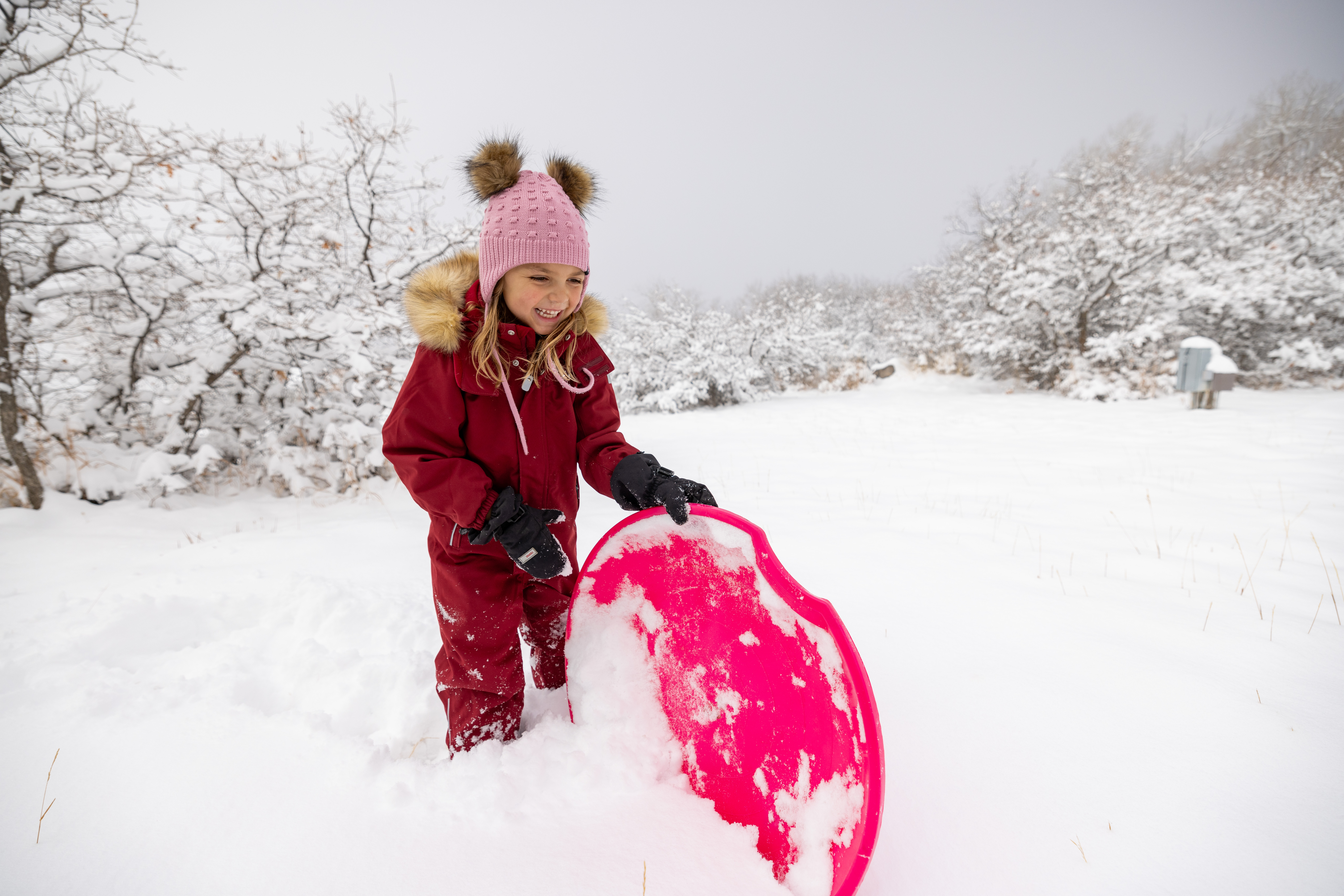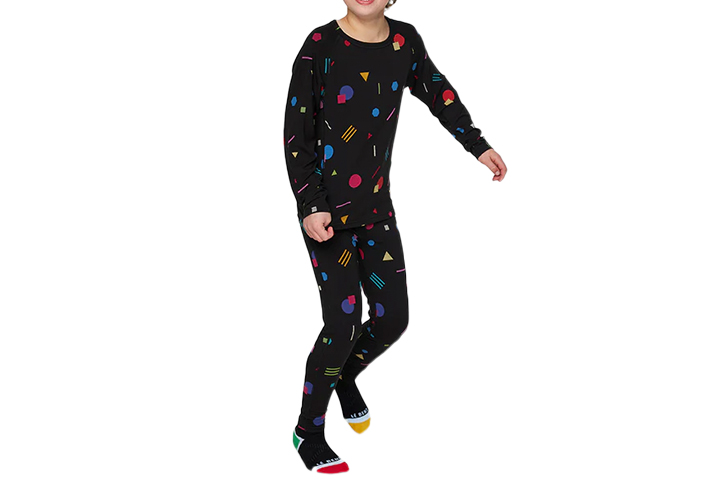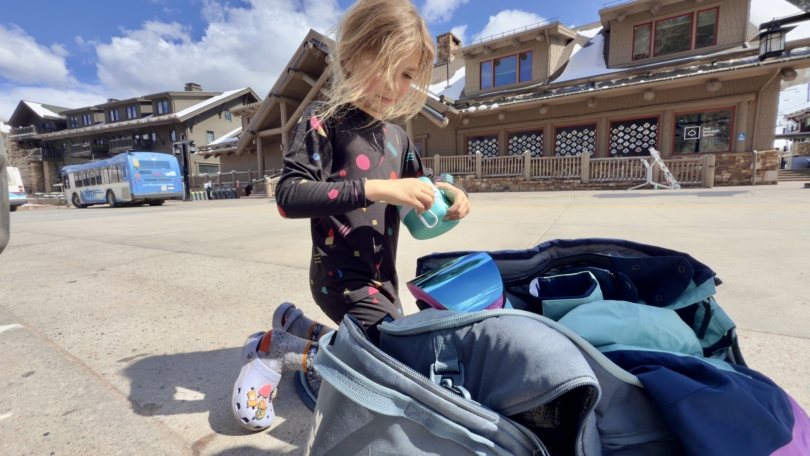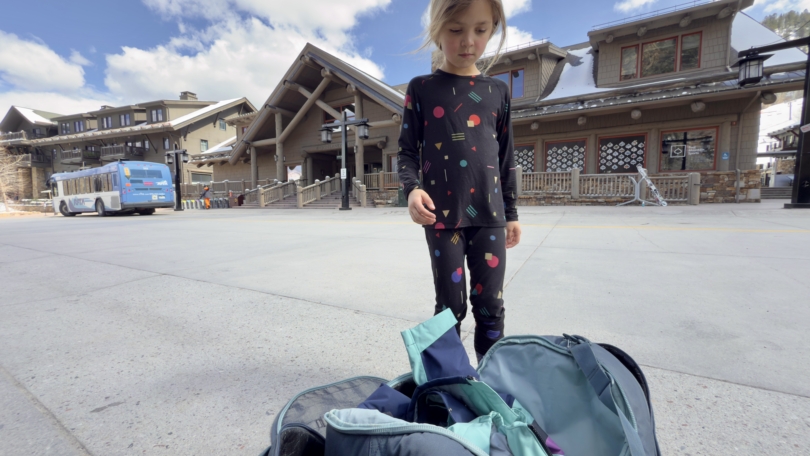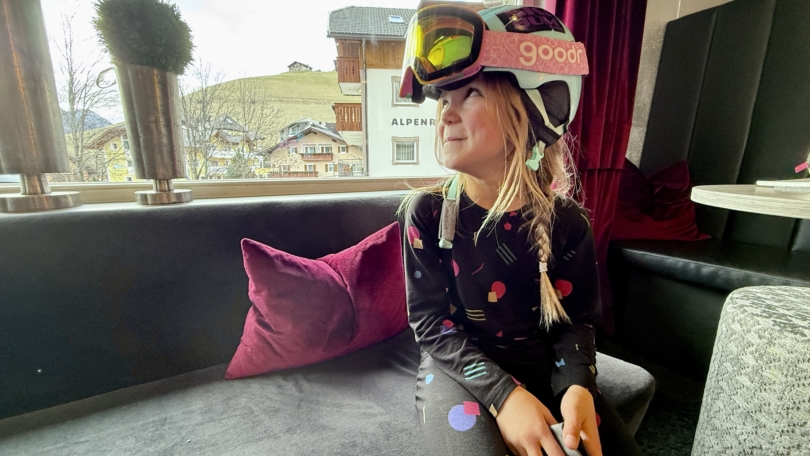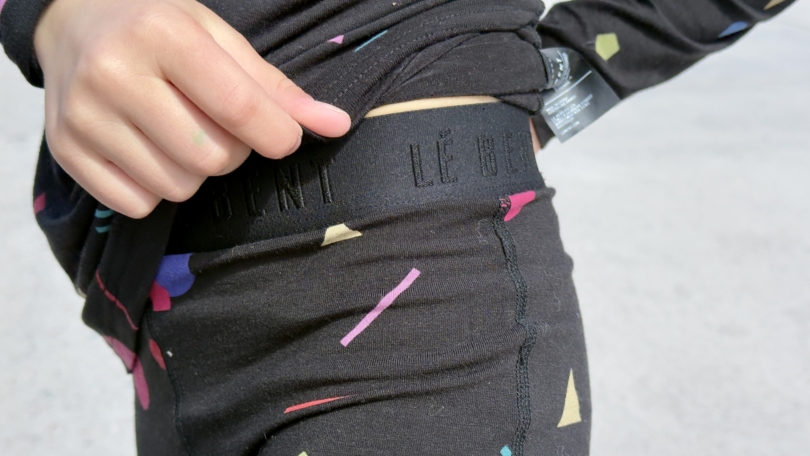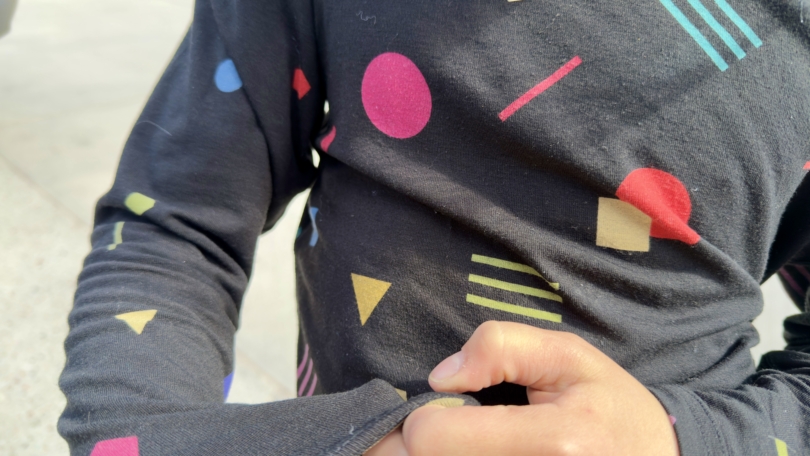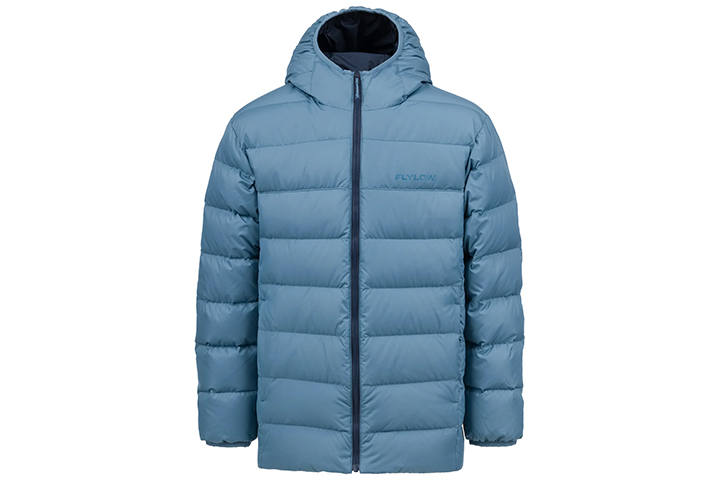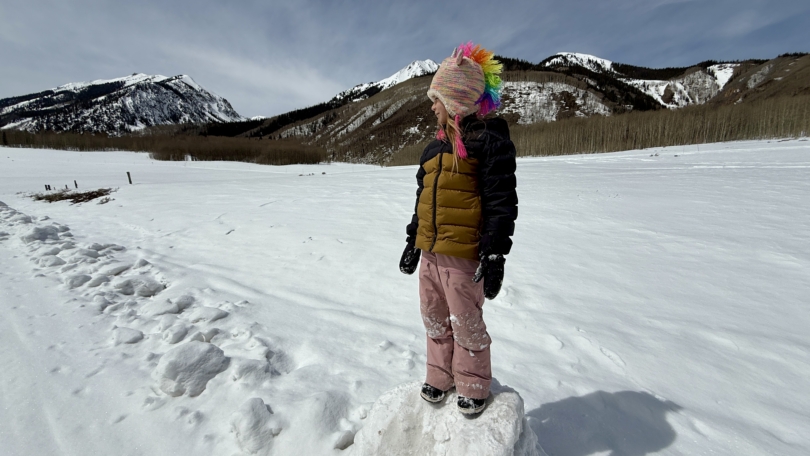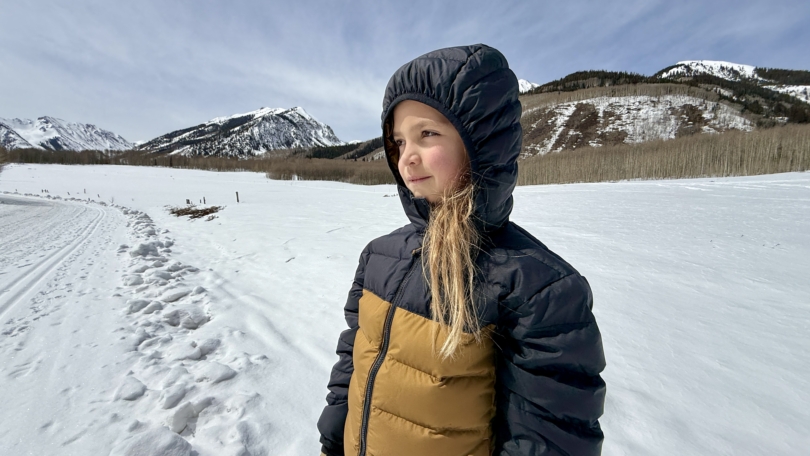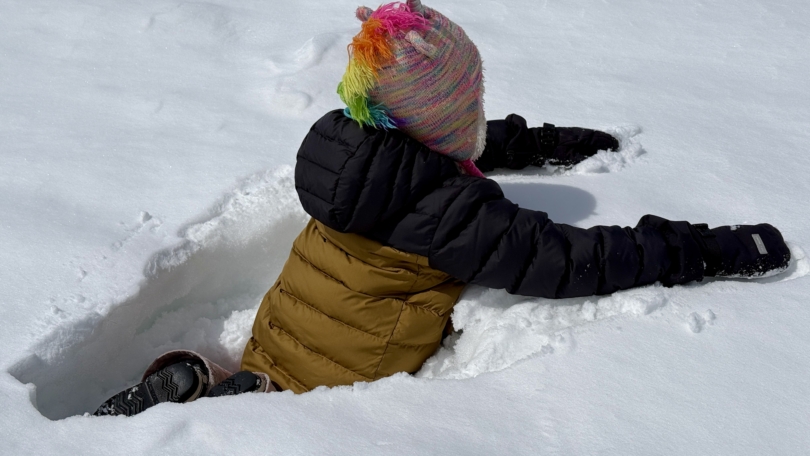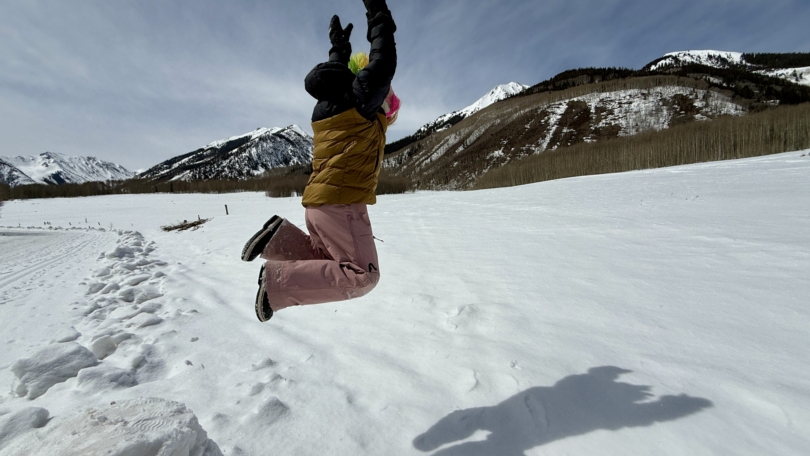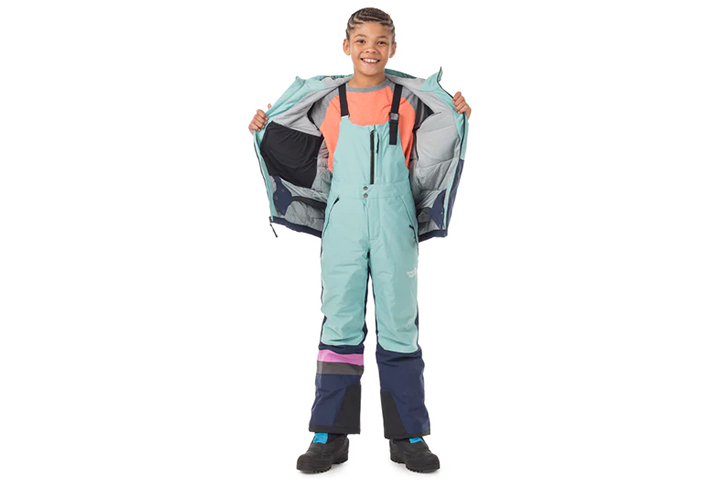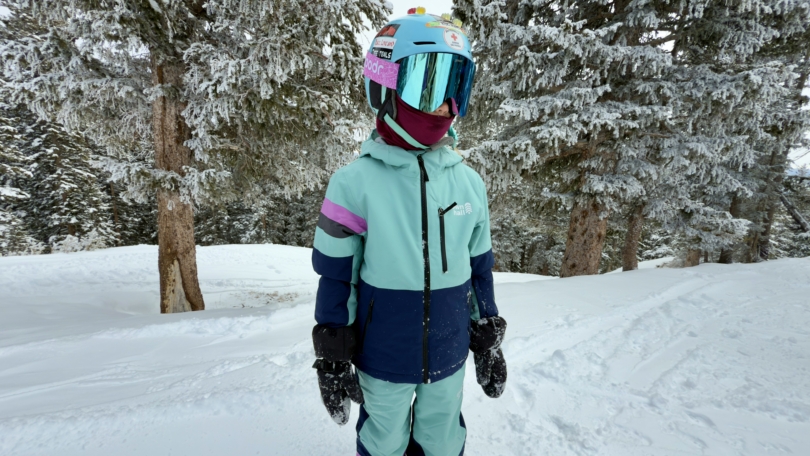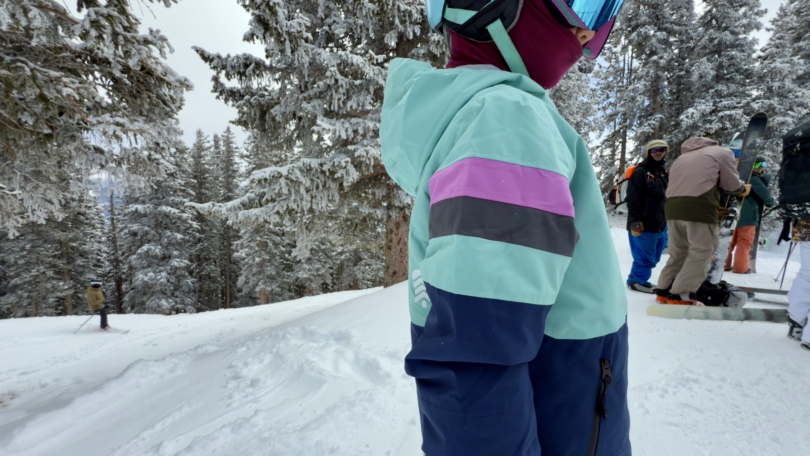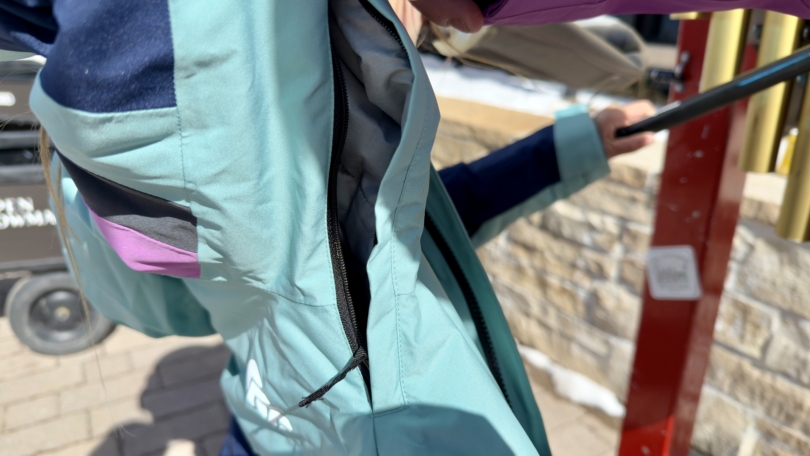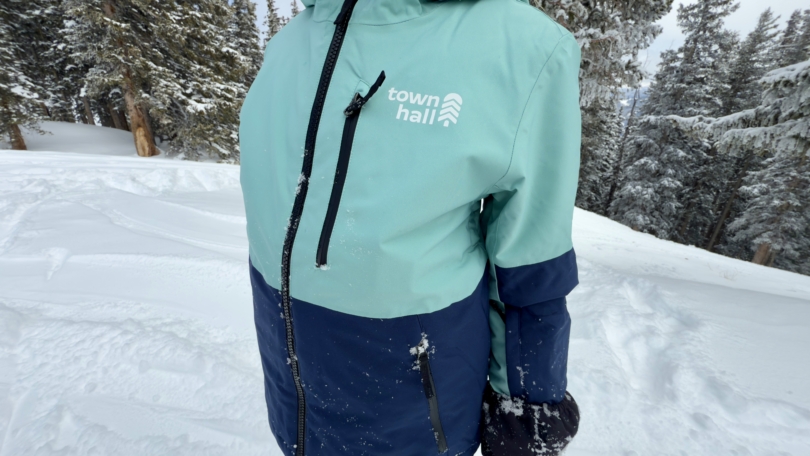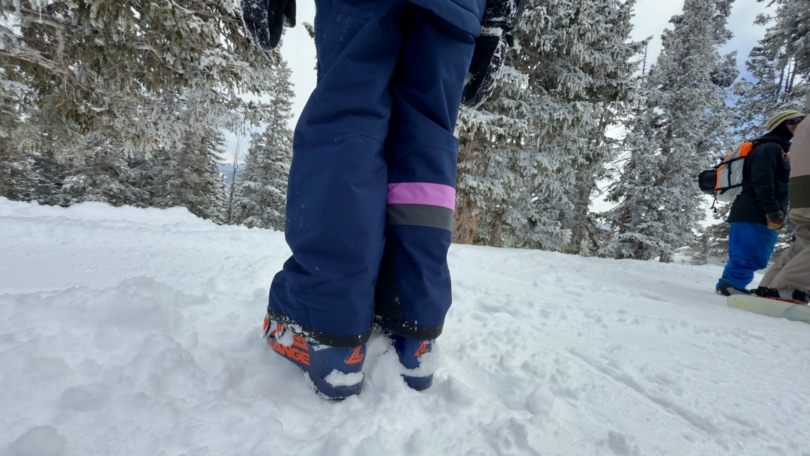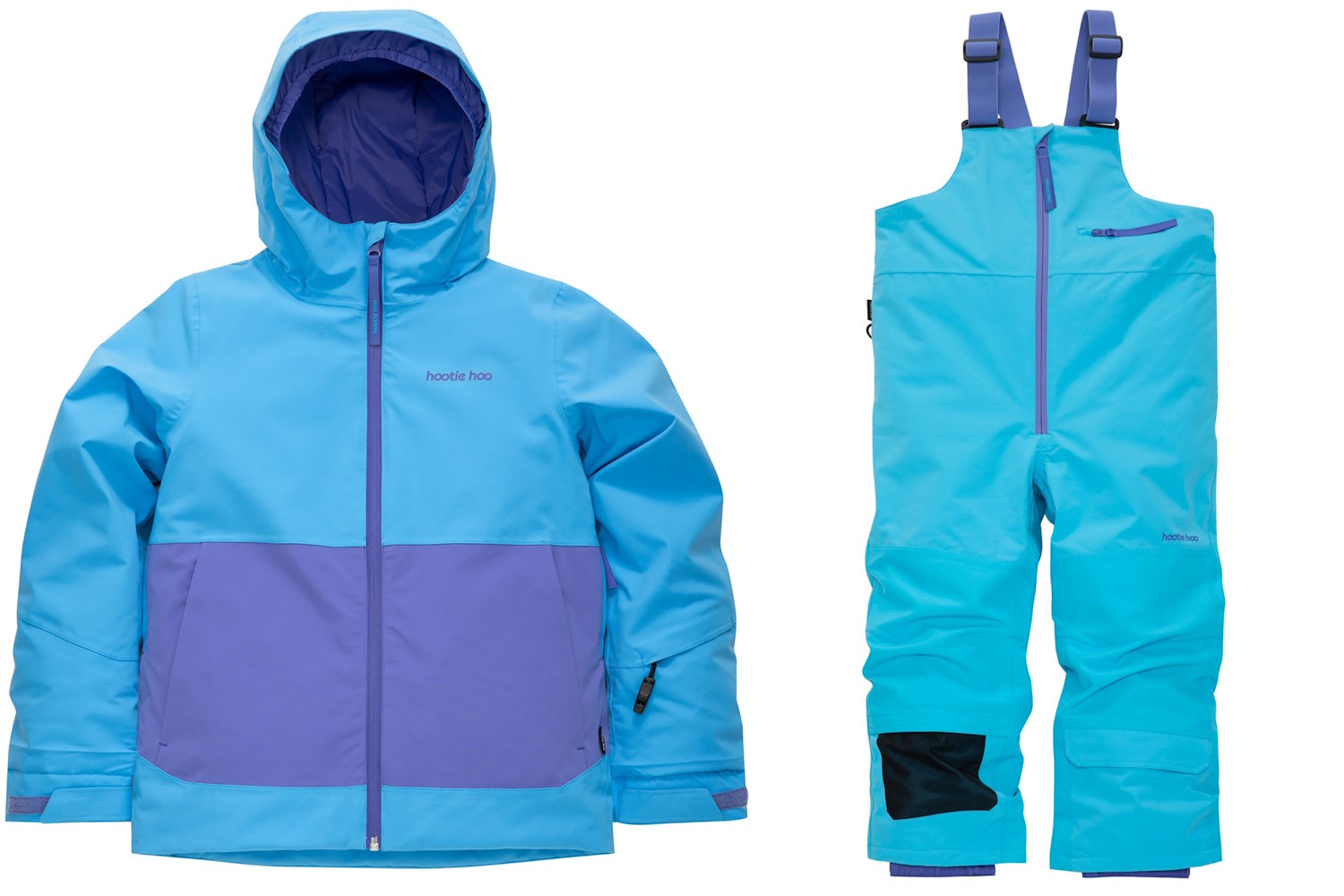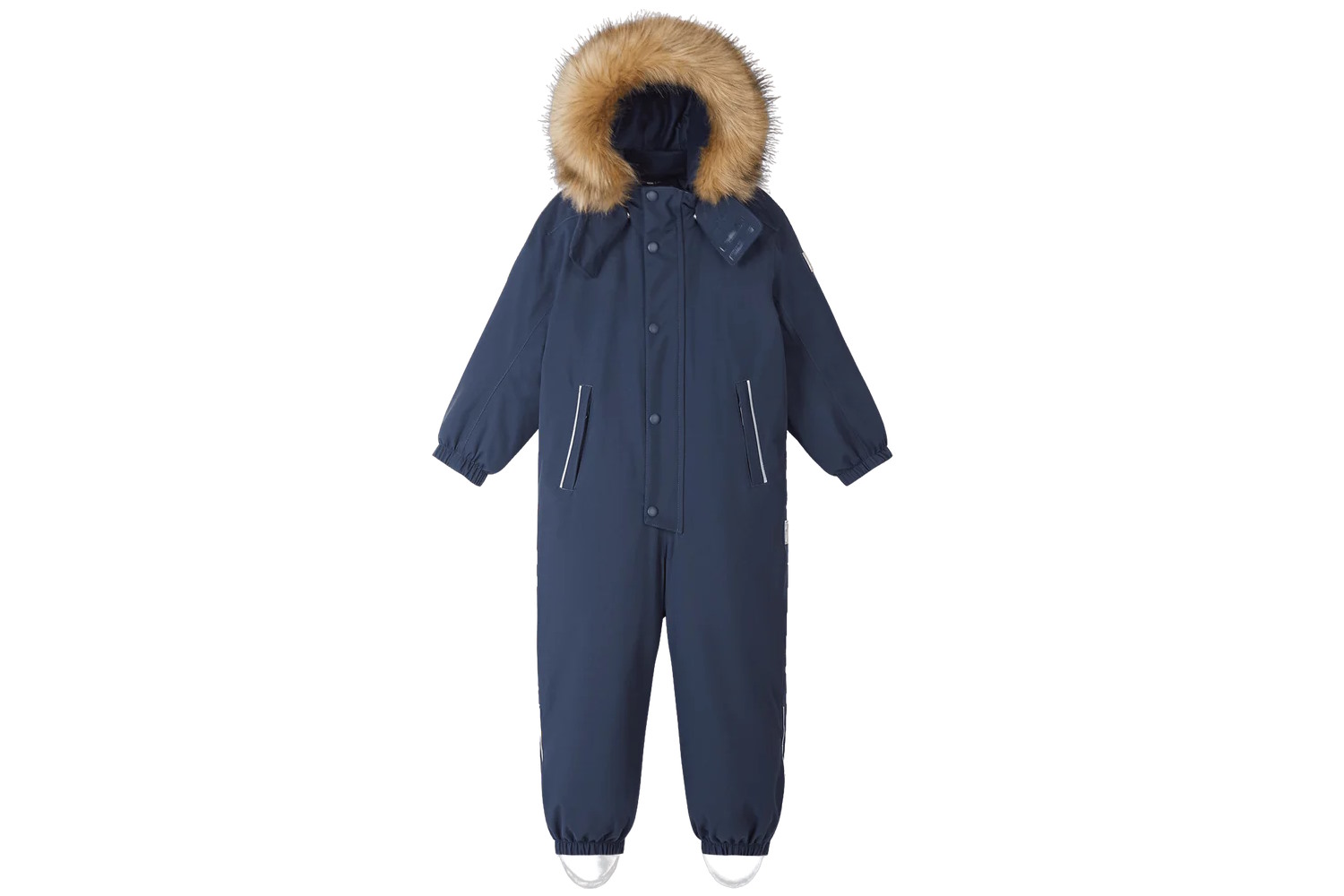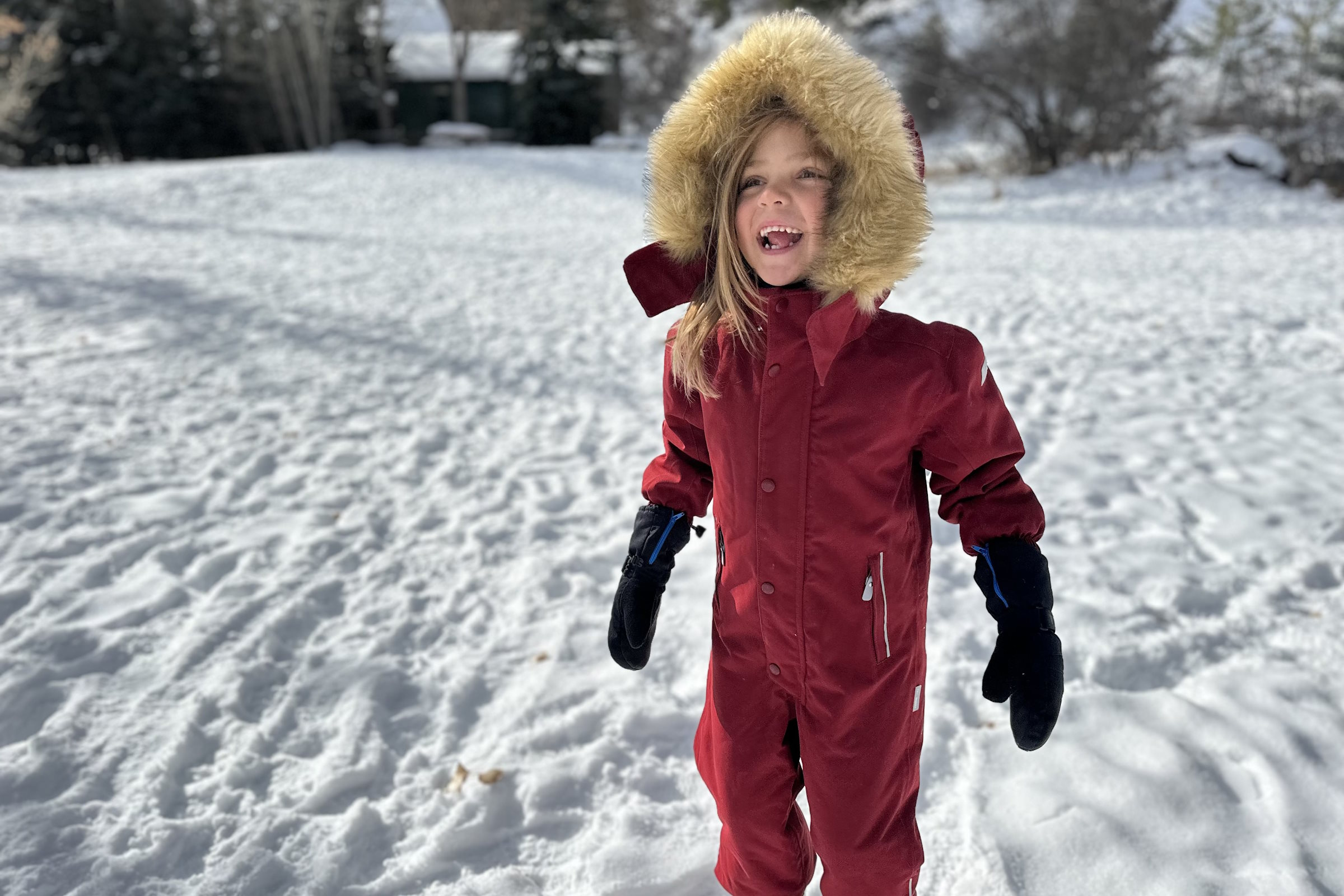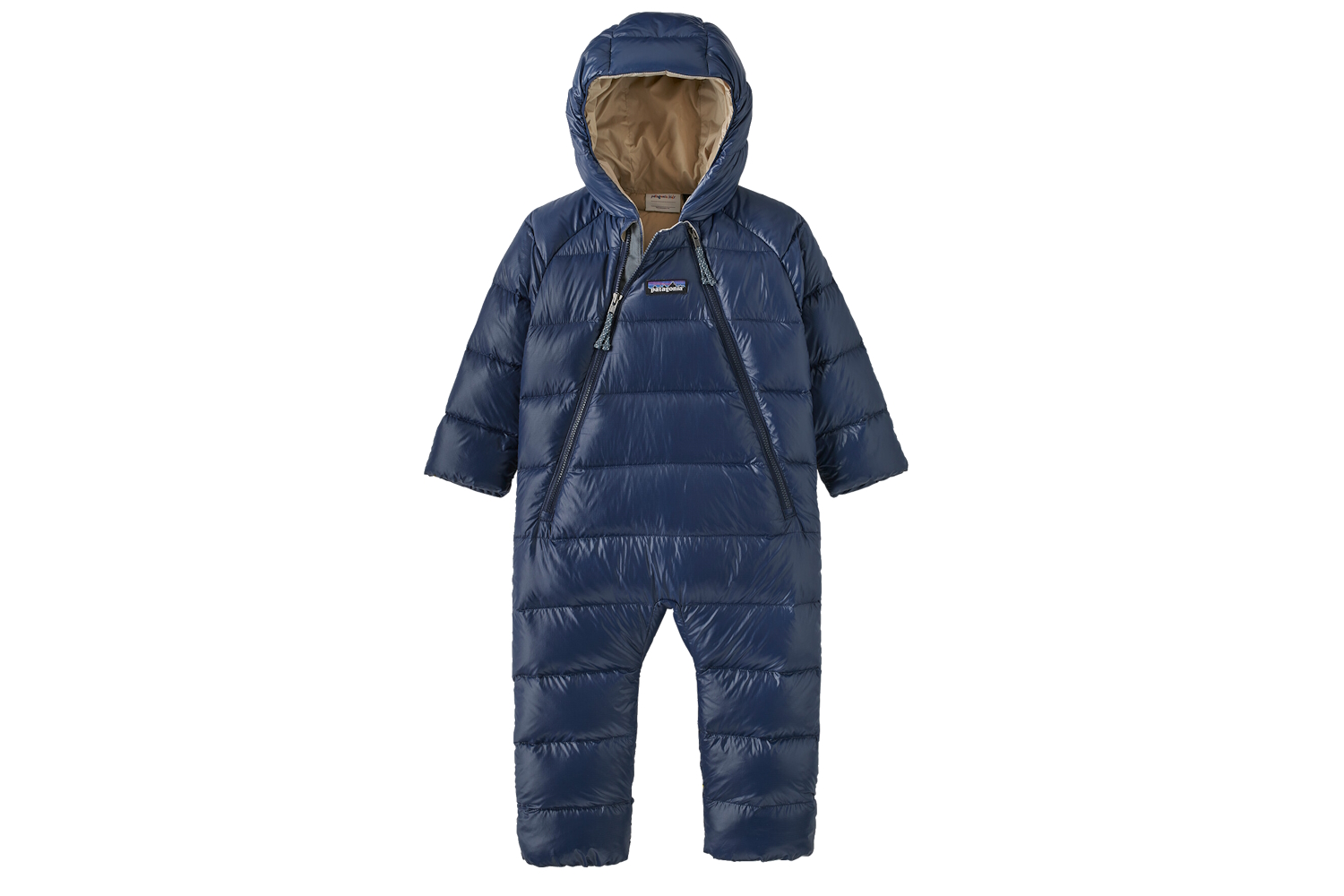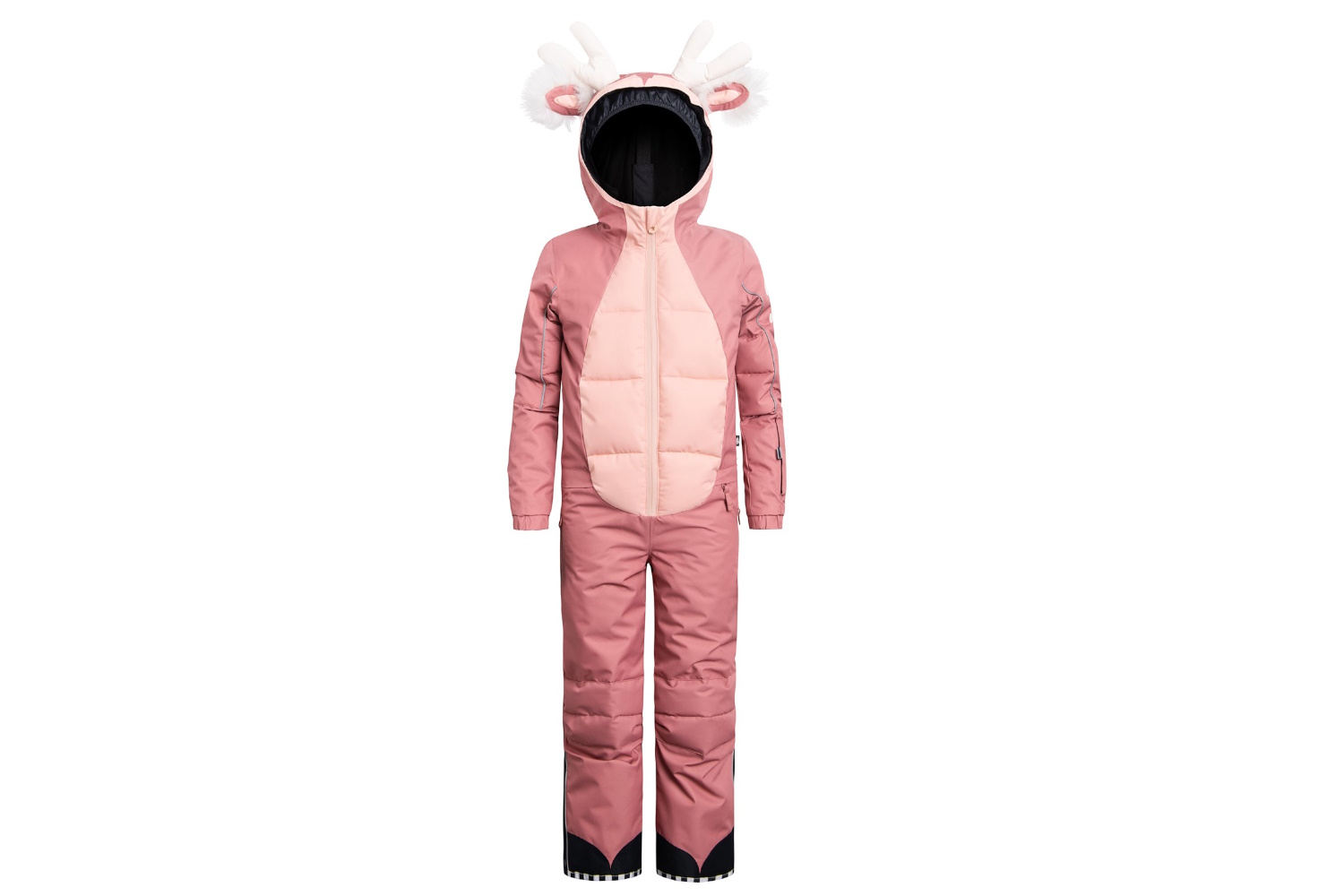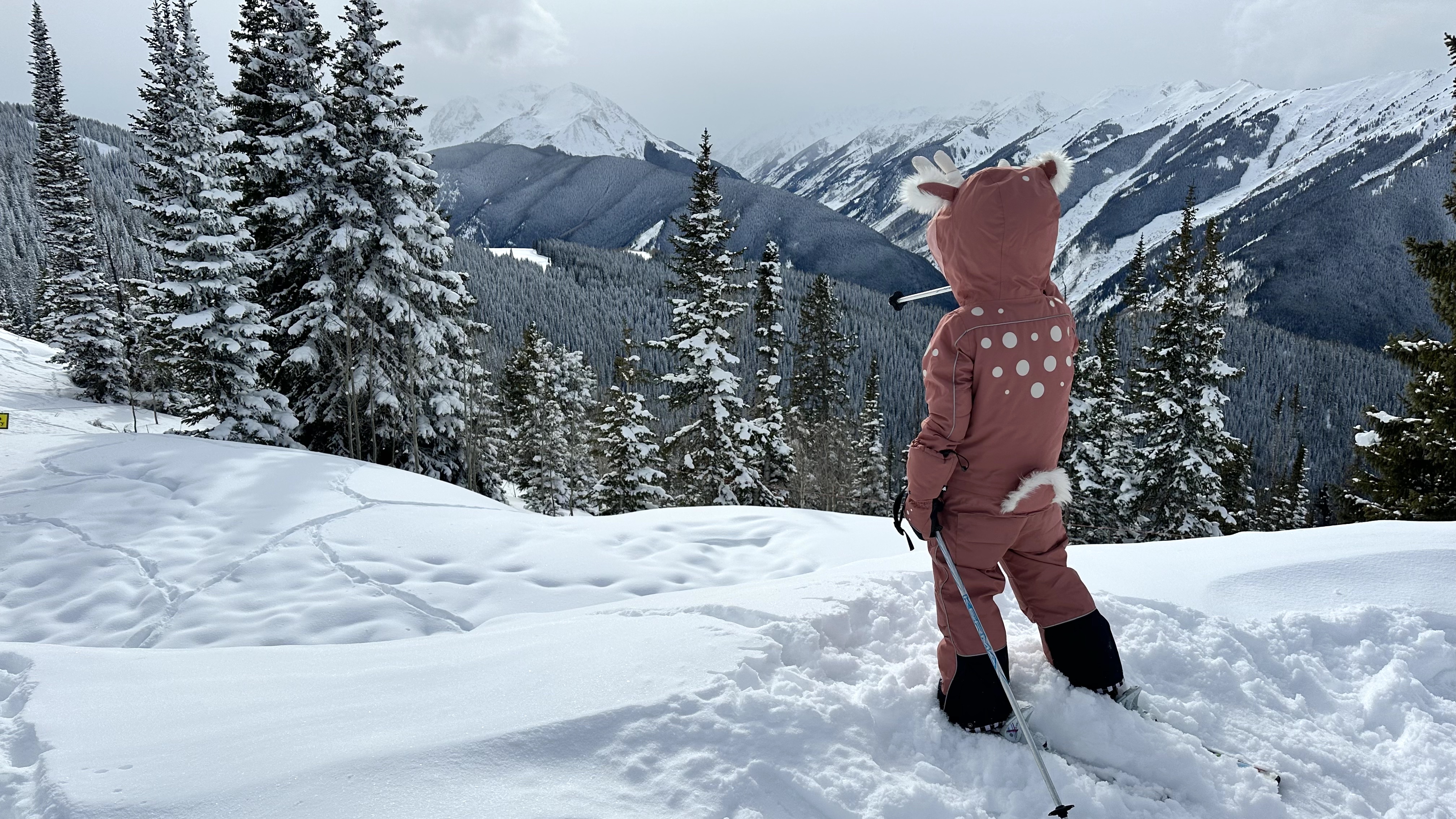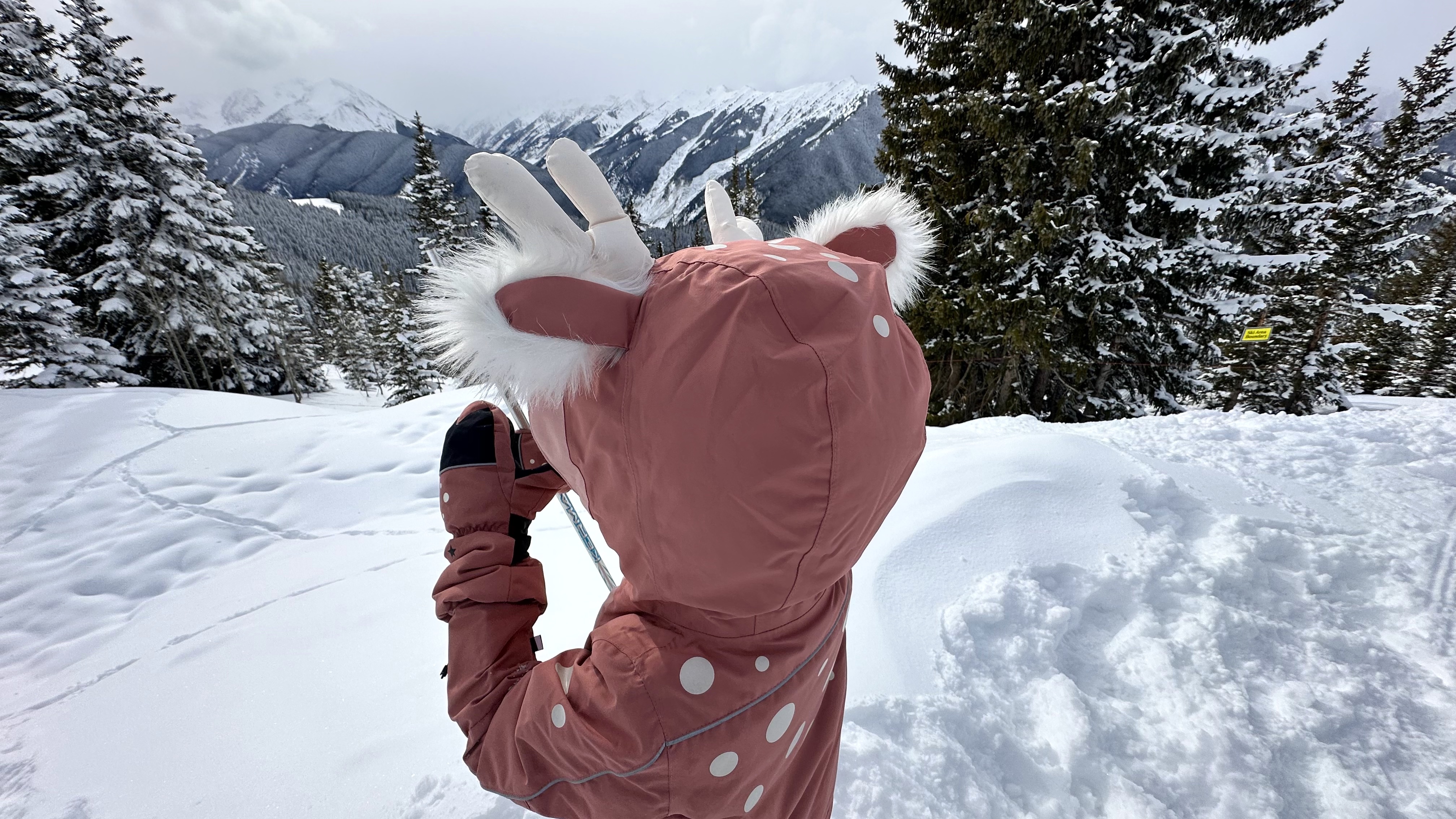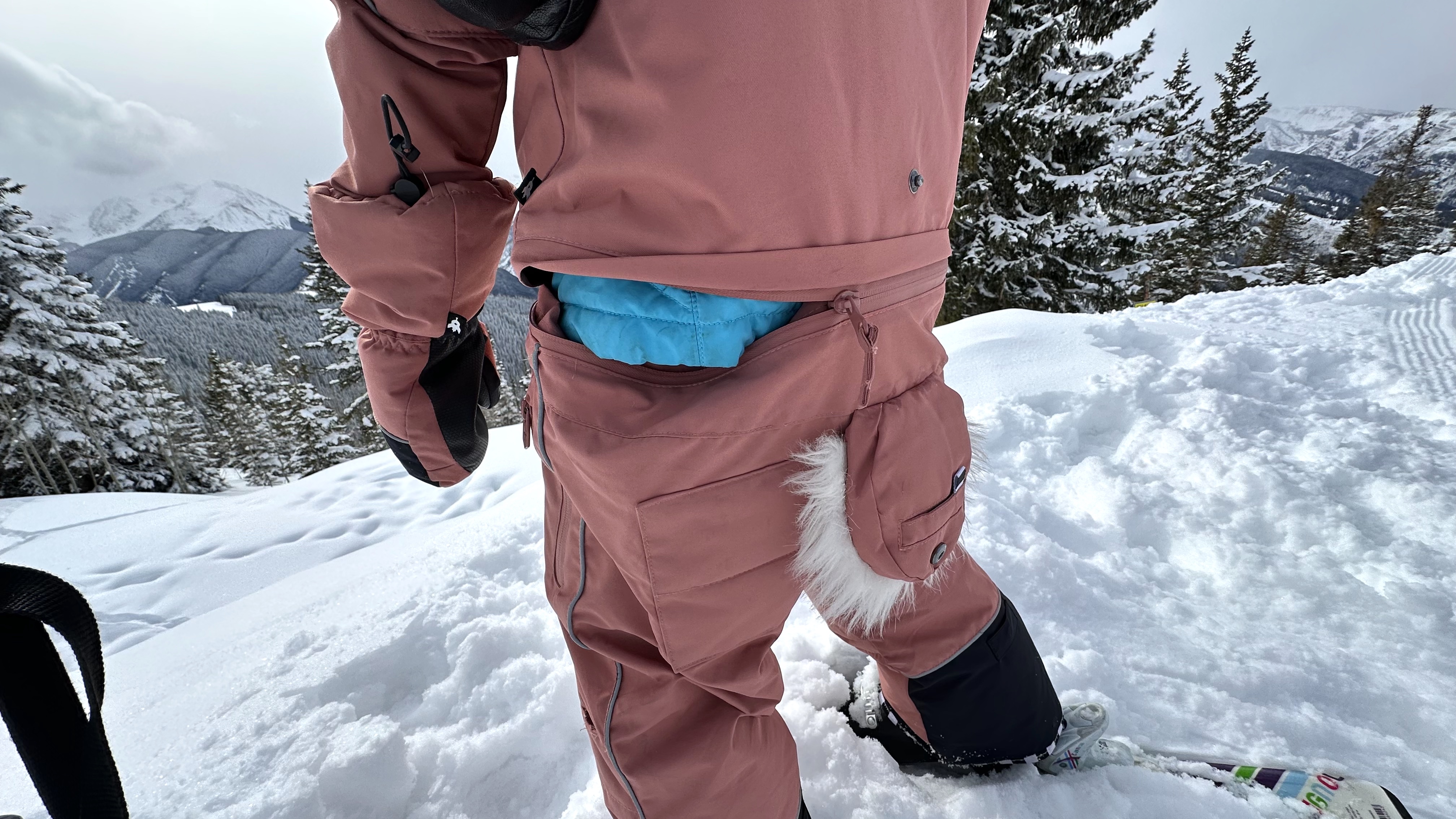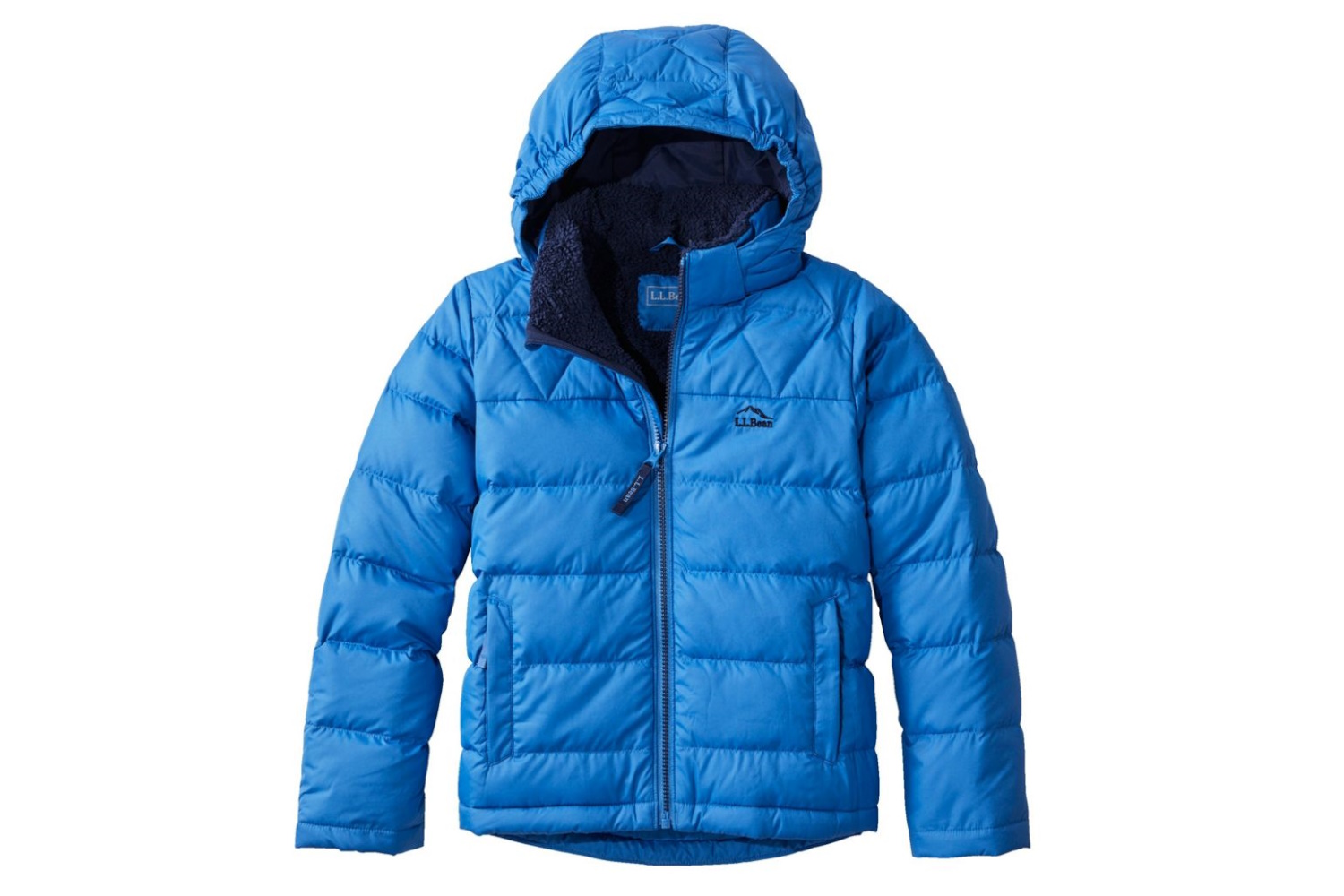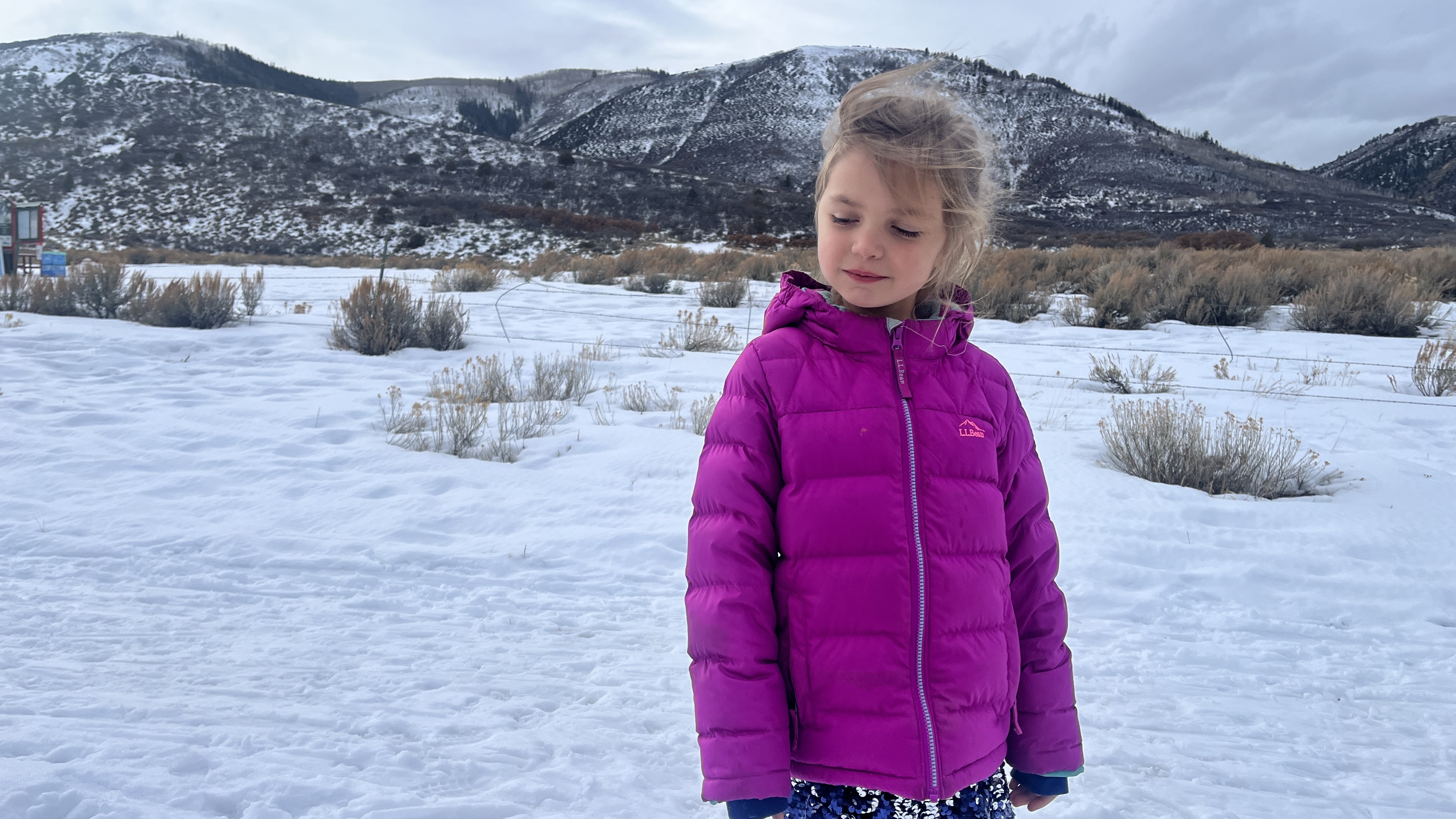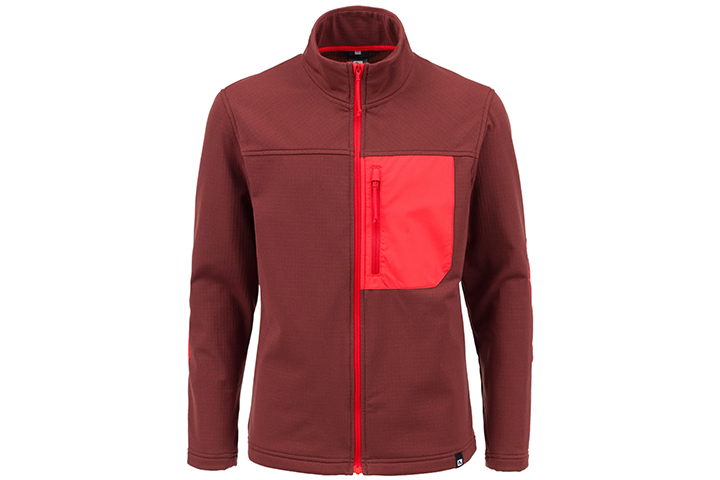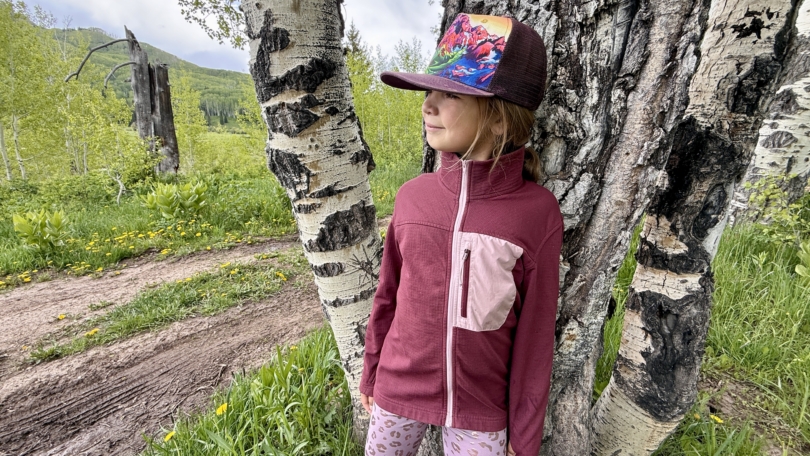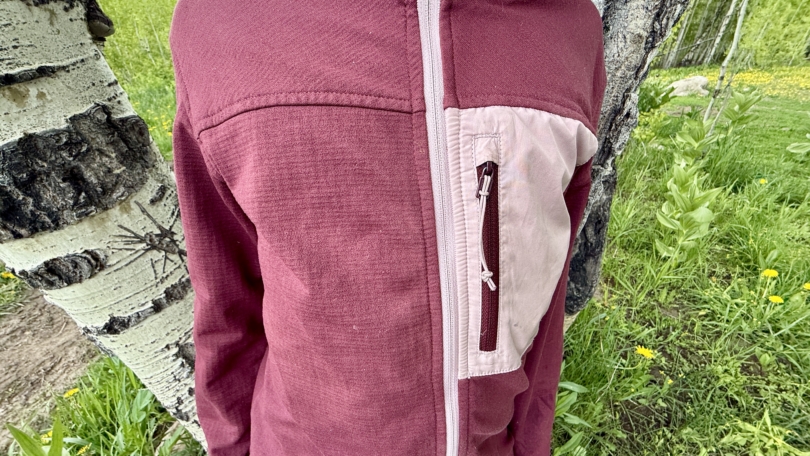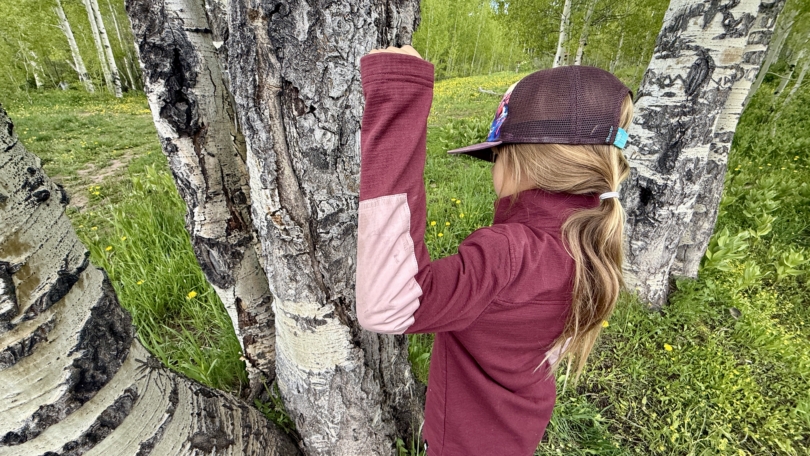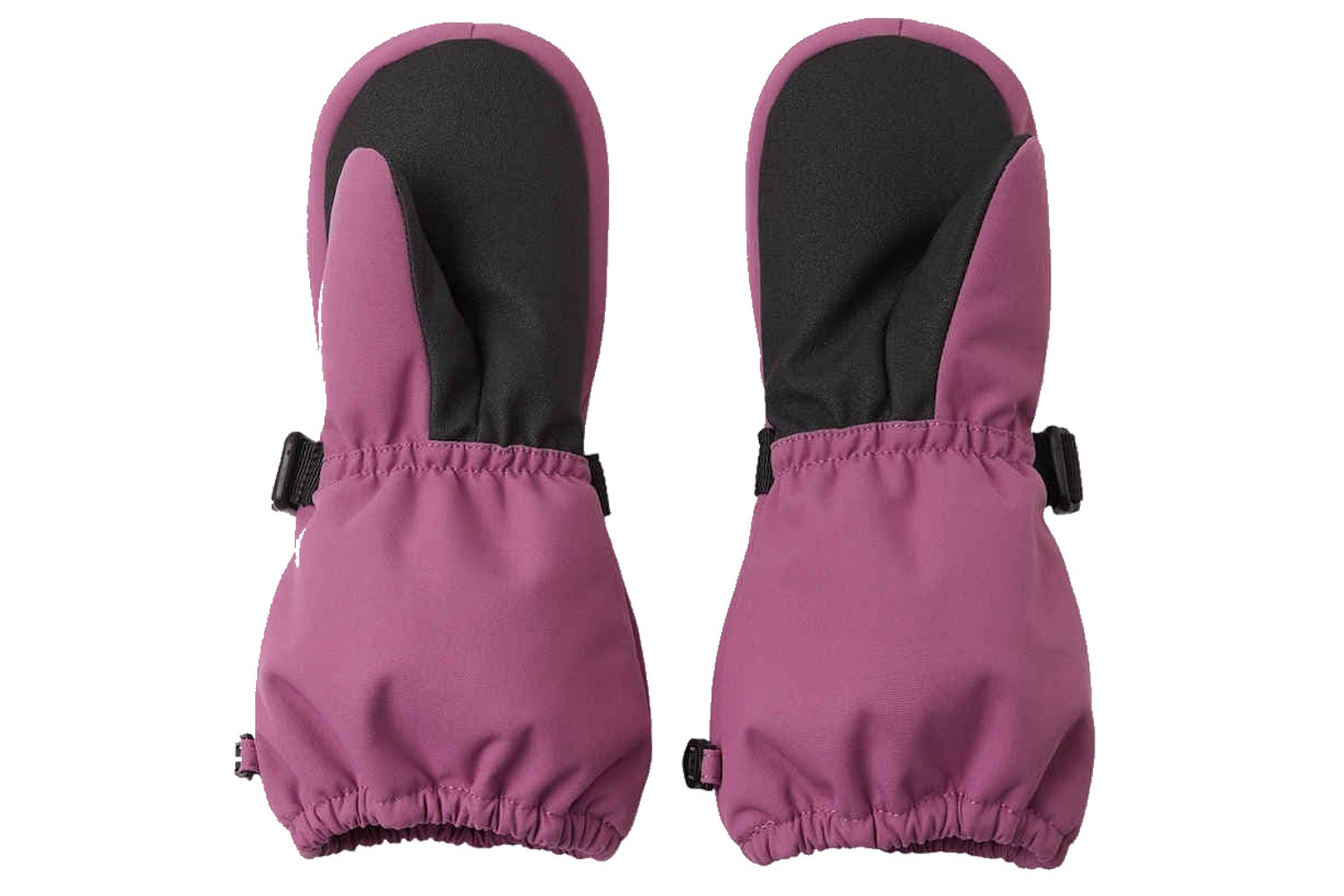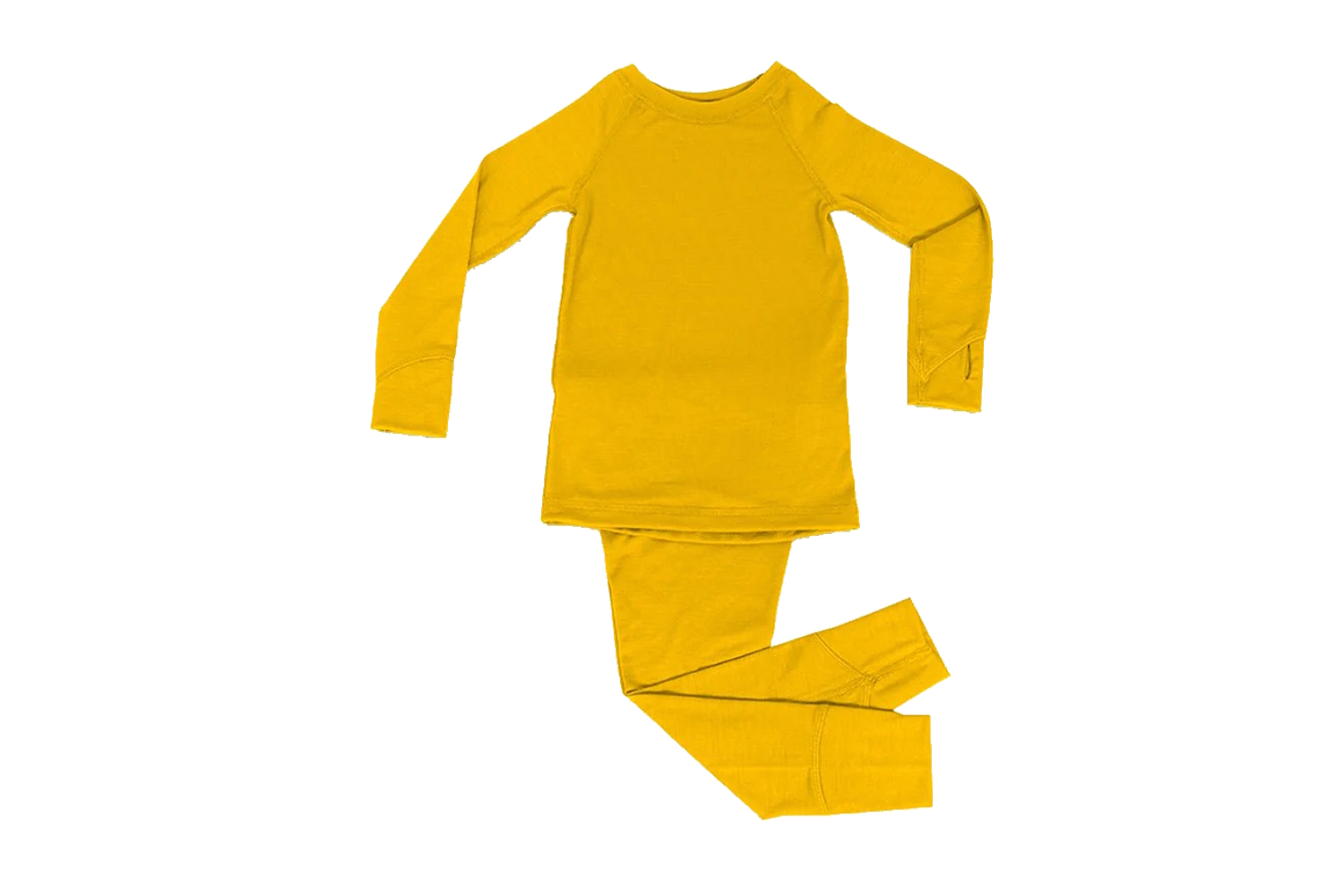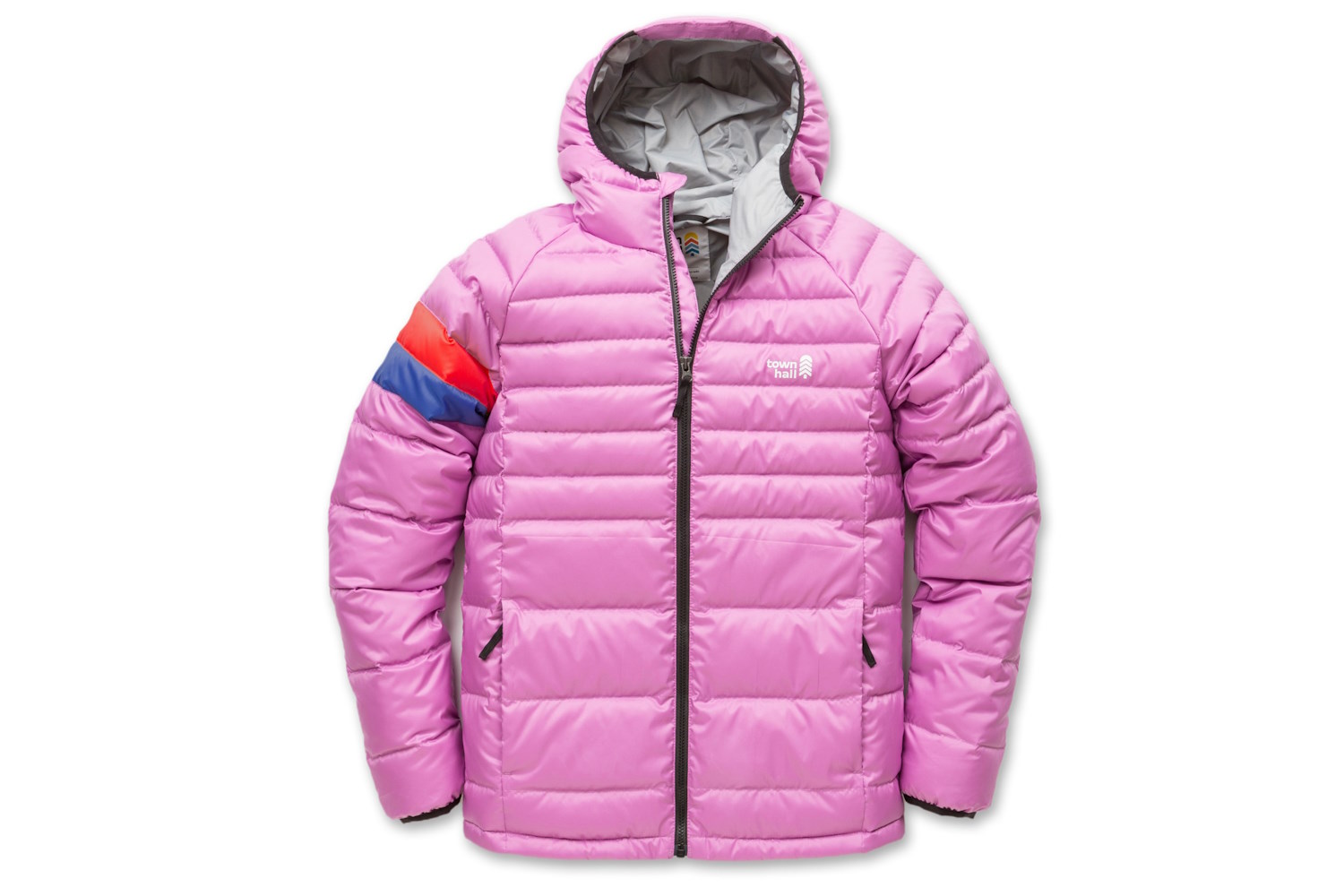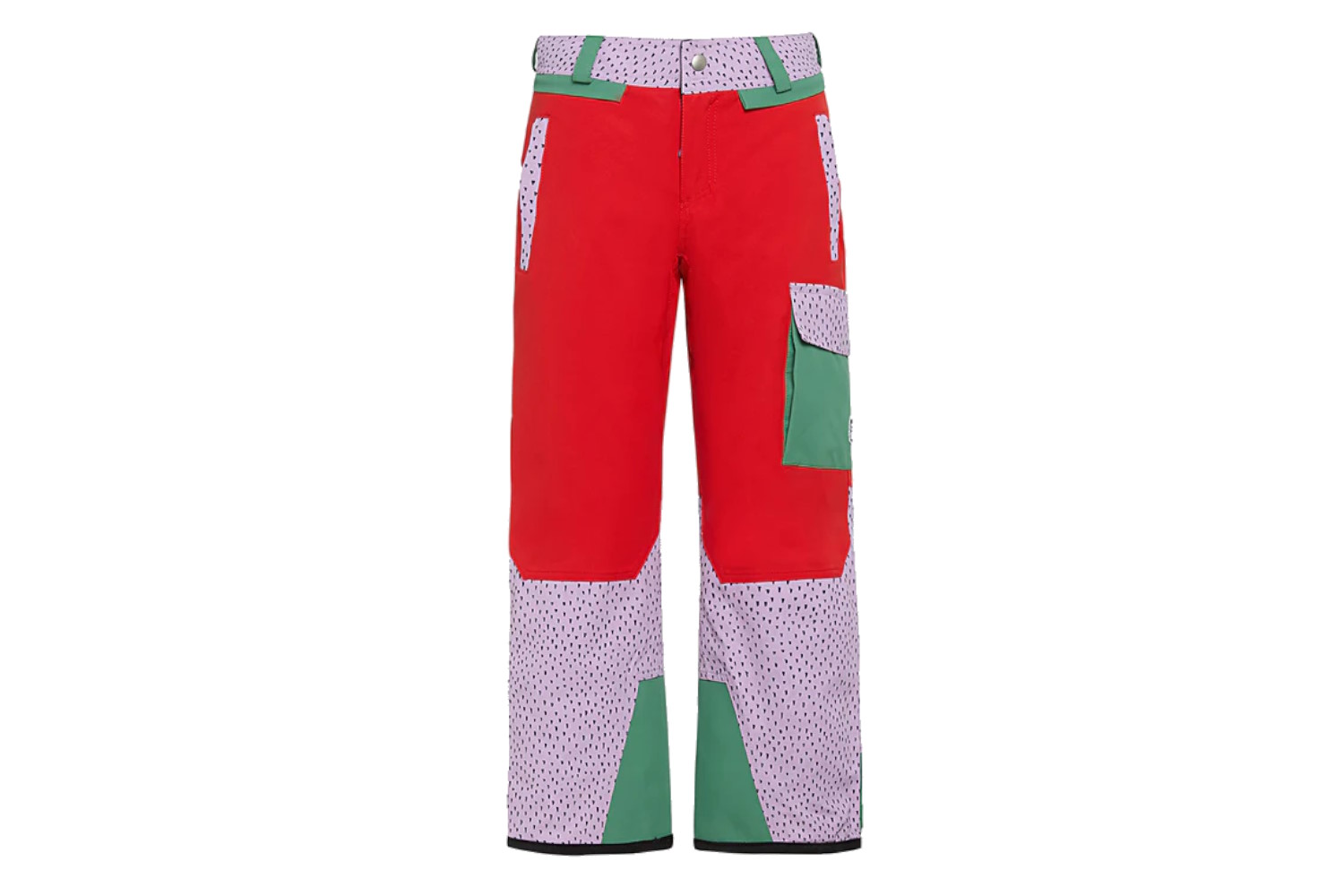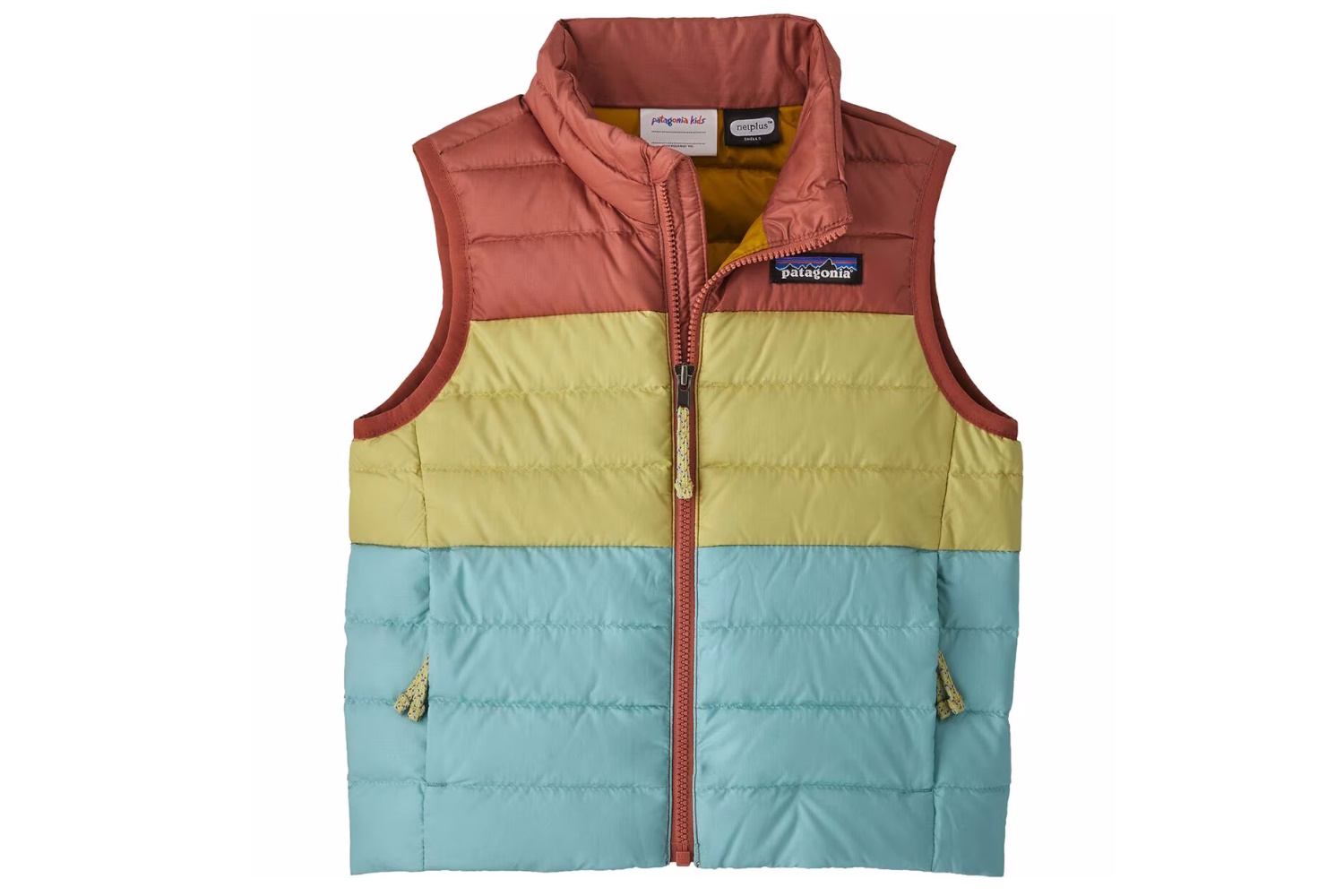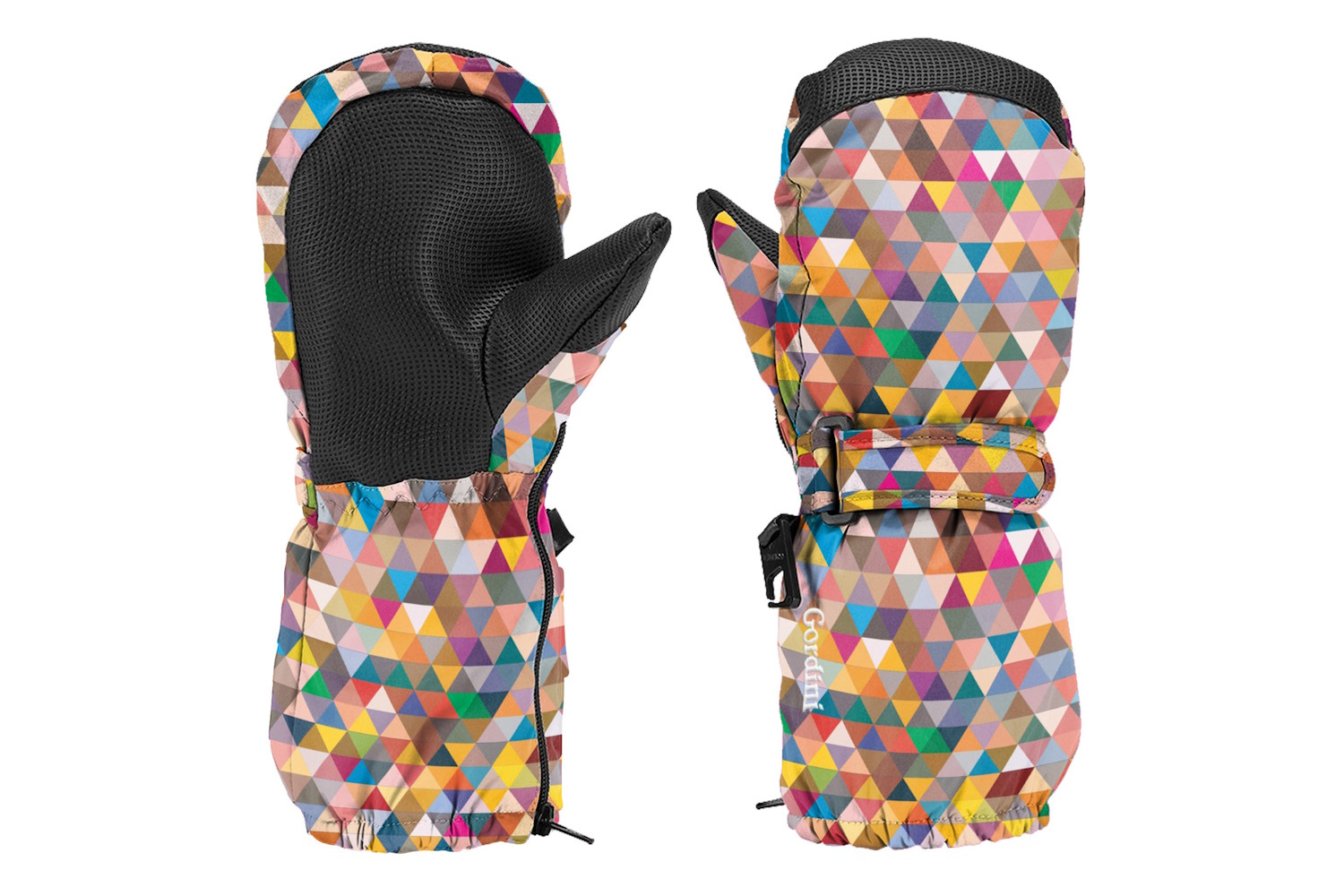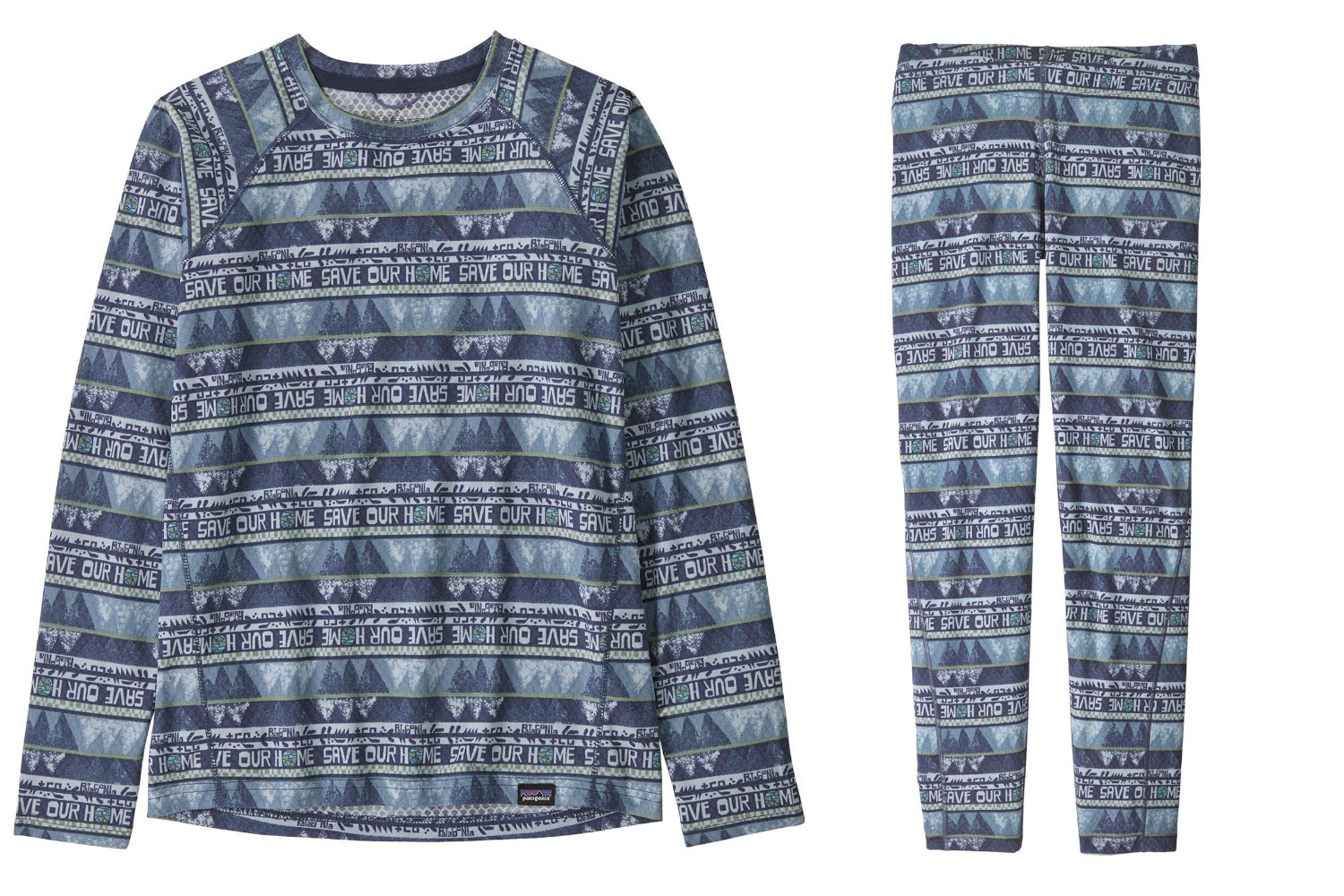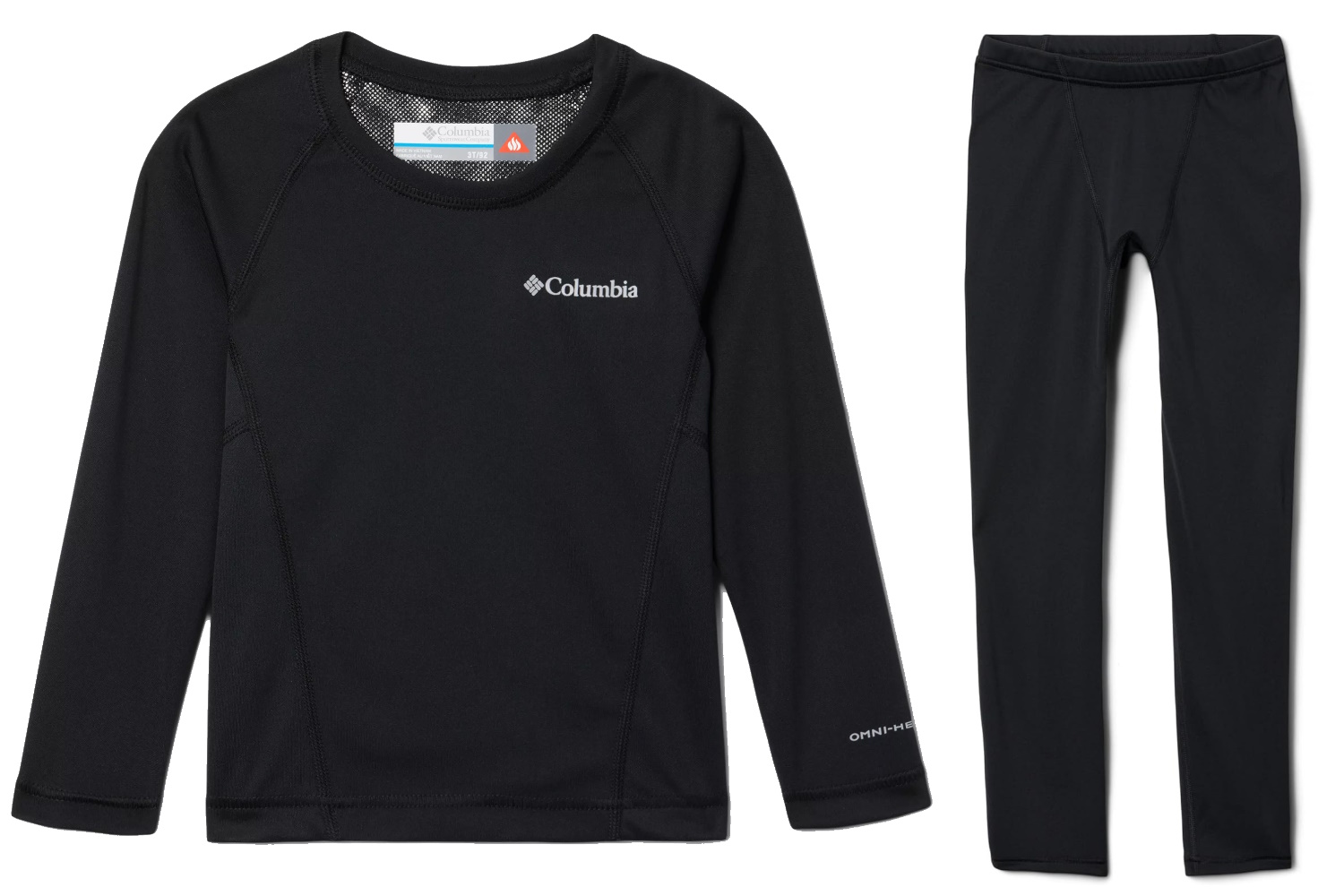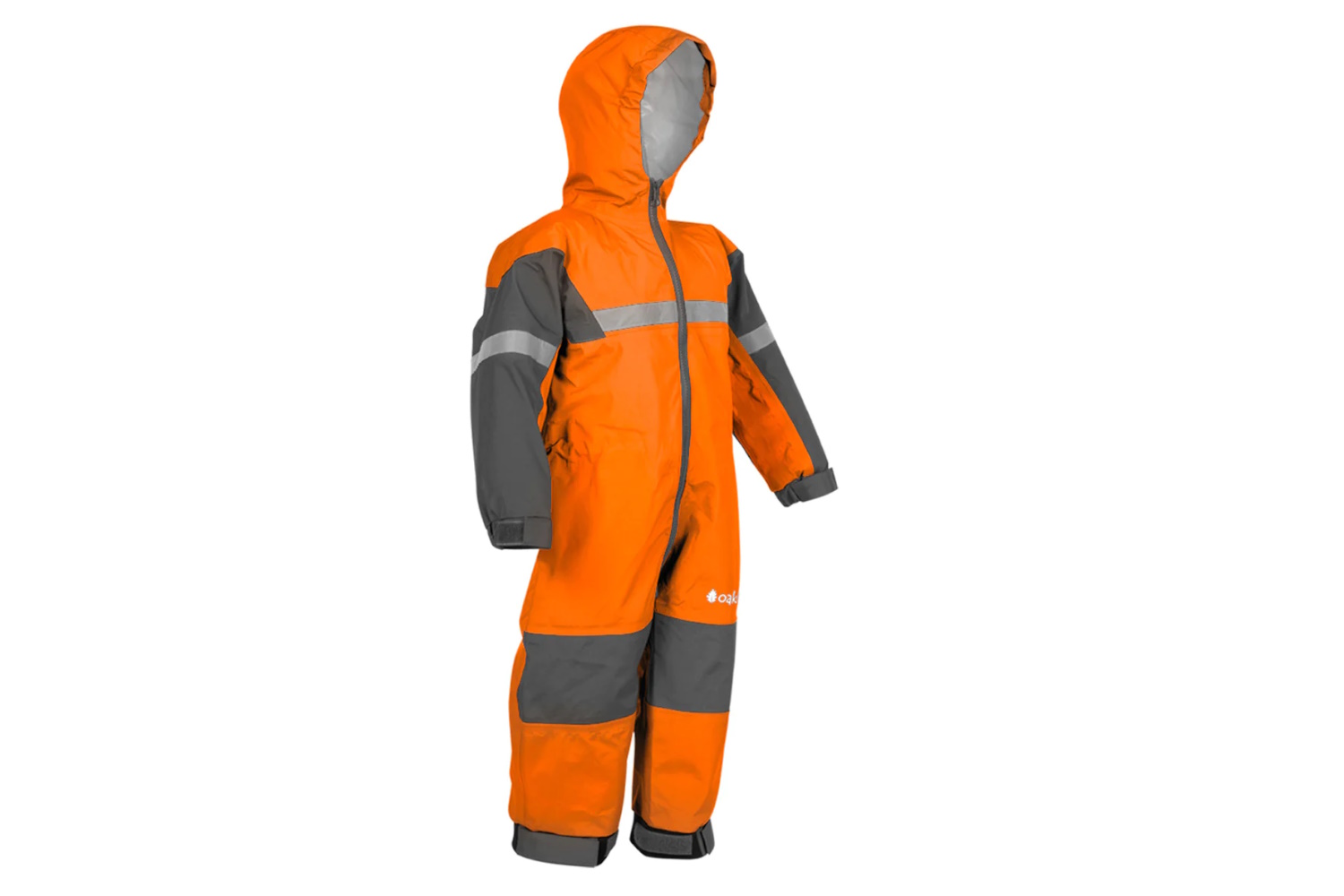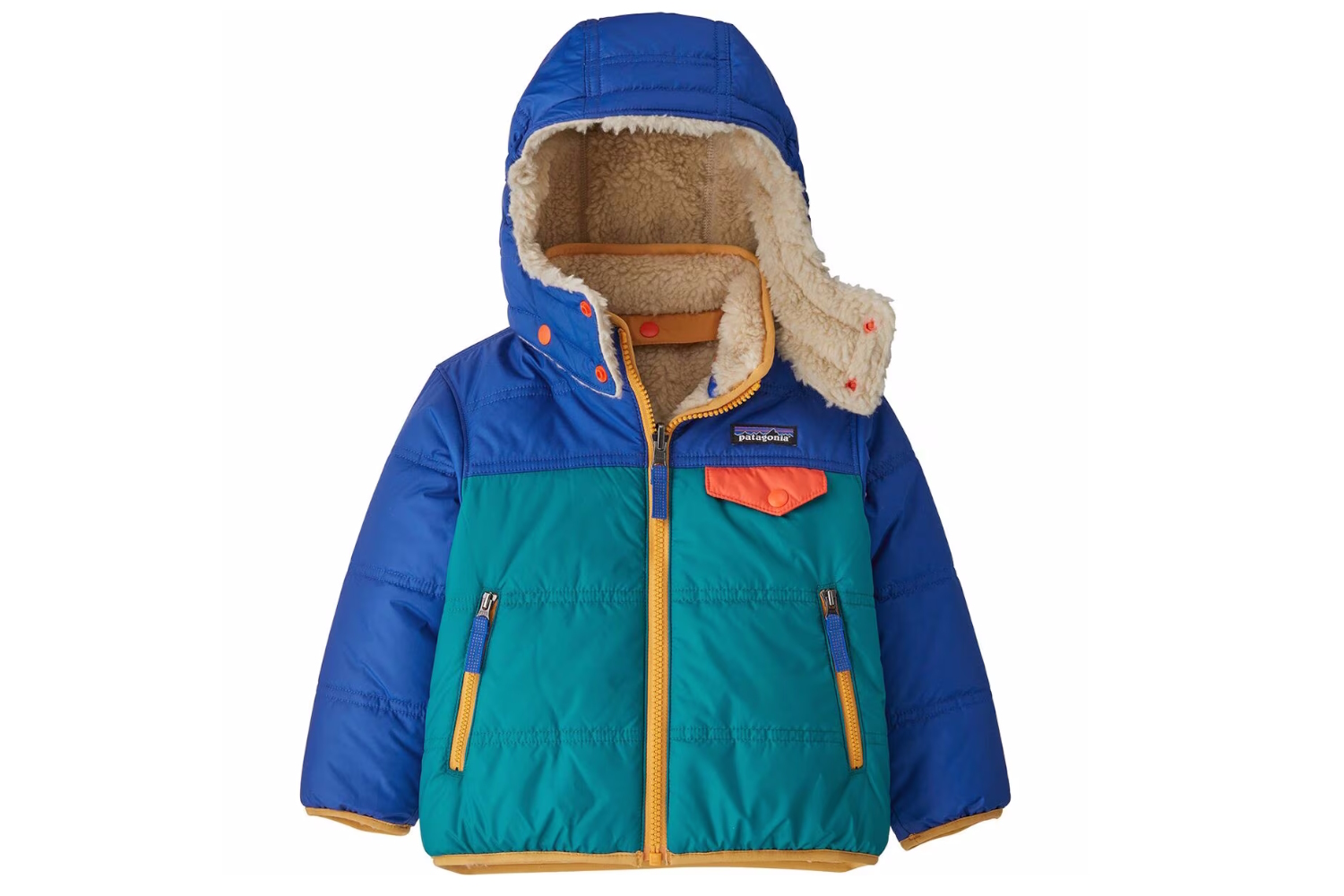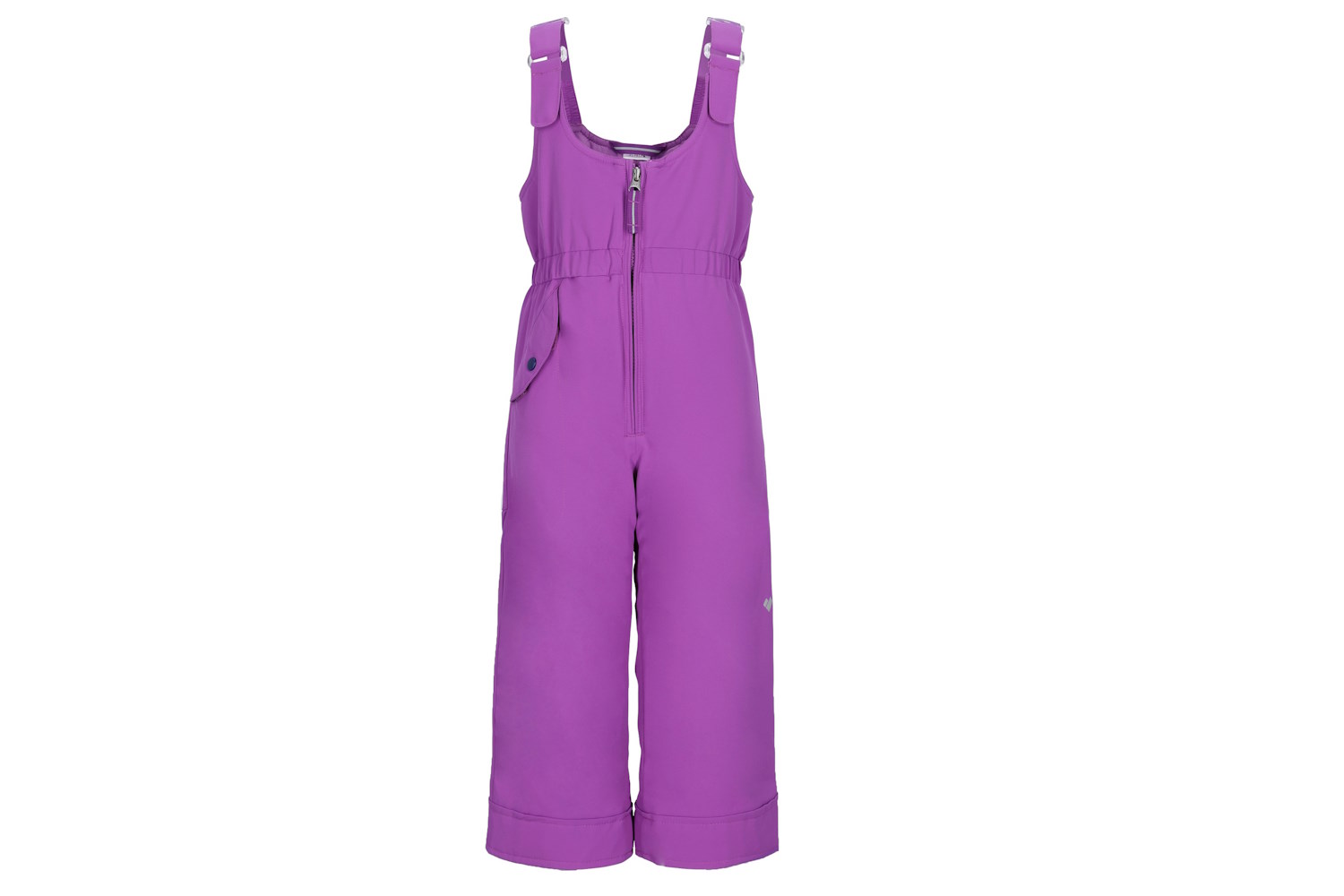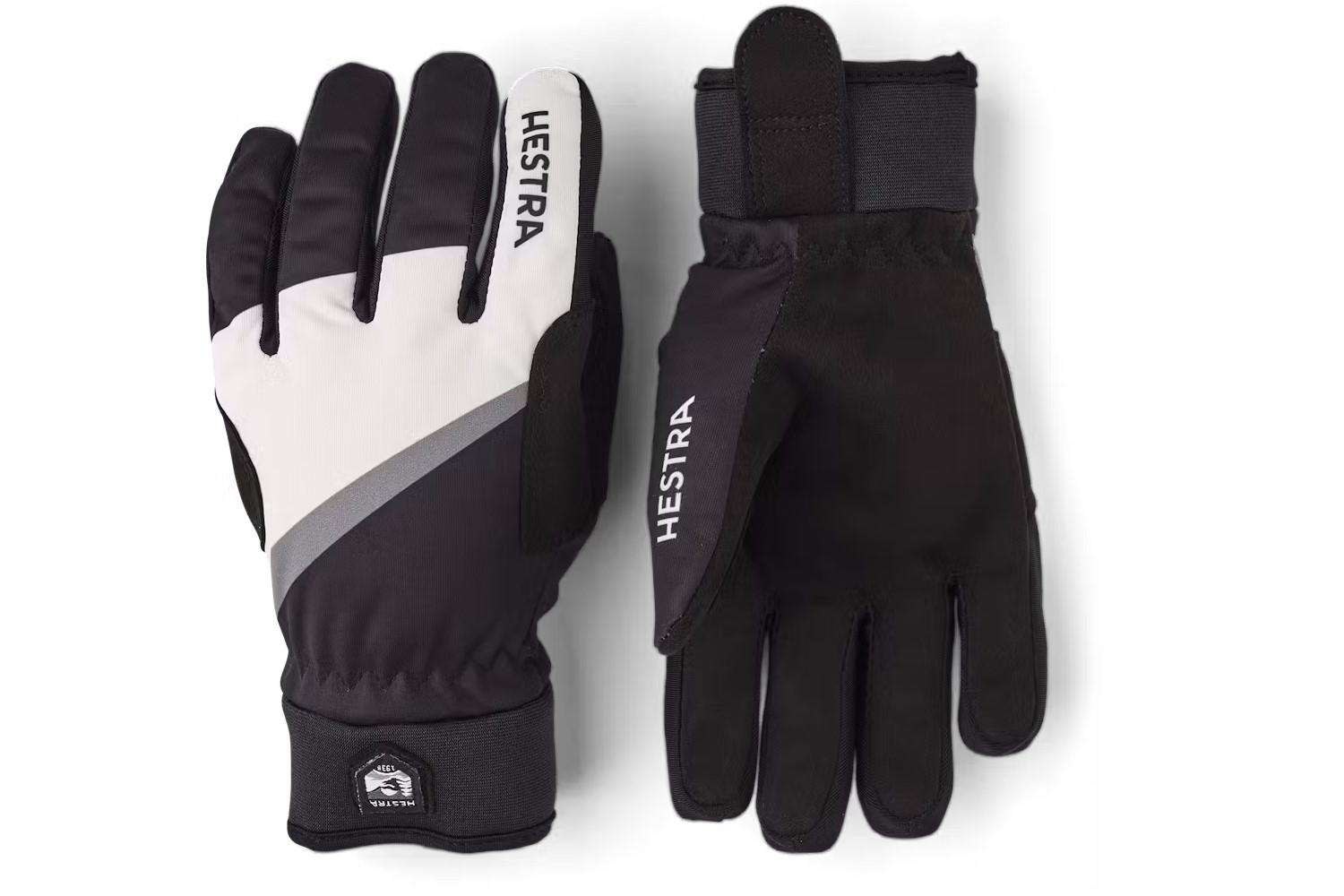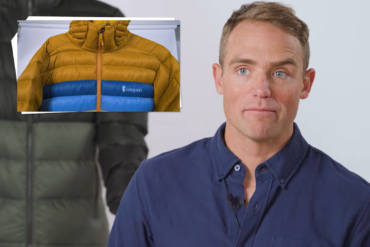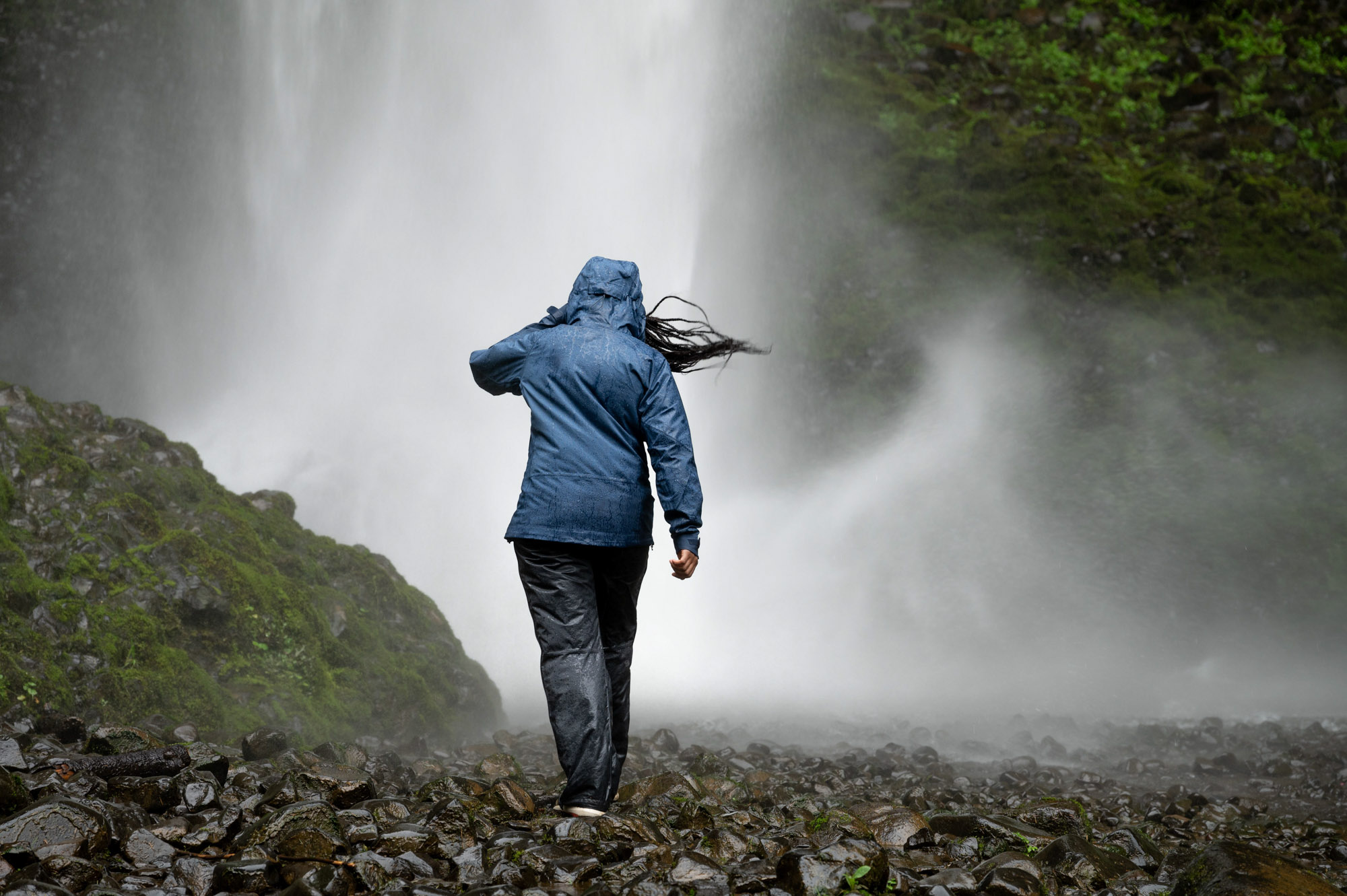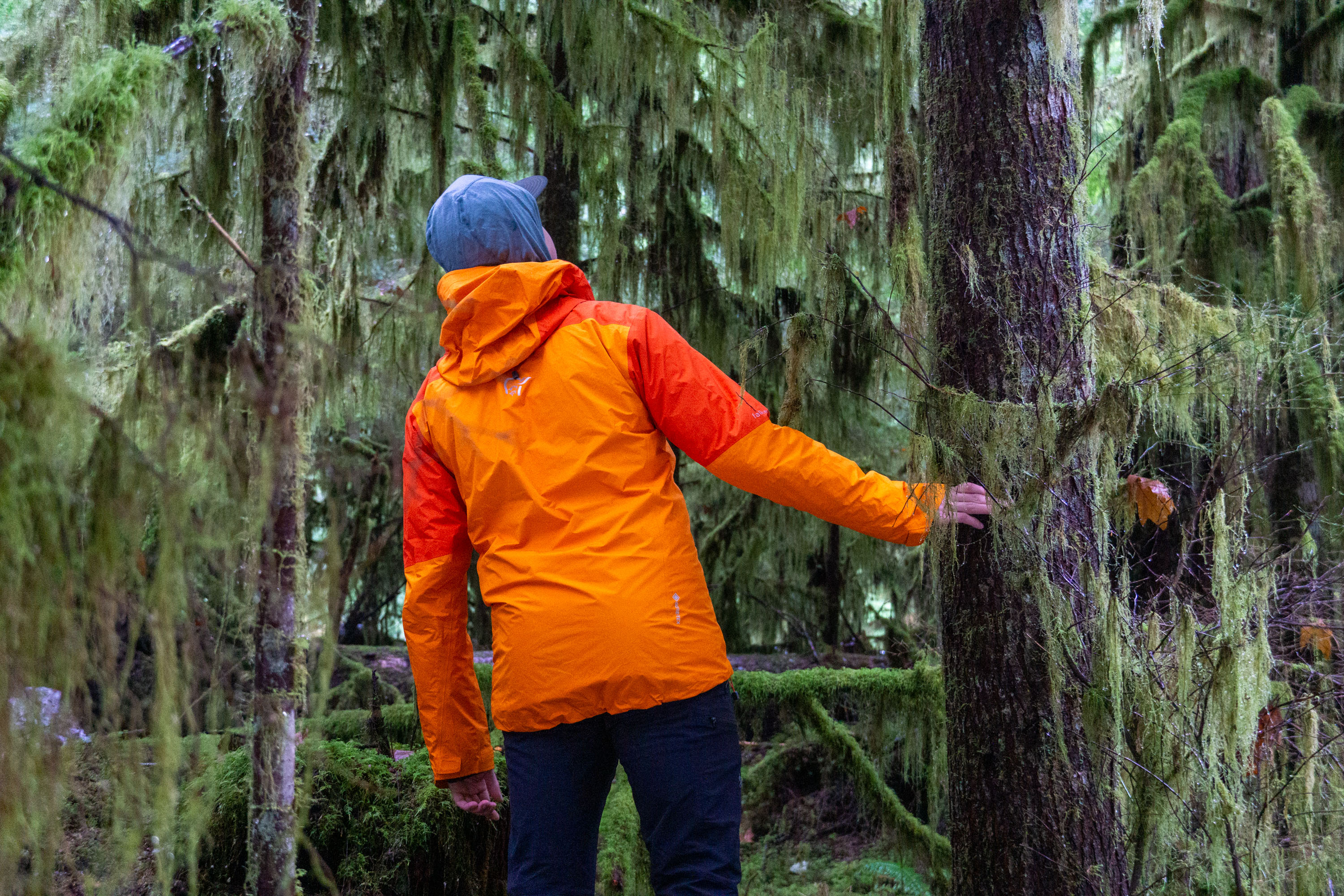There’s no better way to raise future adventurers than getting them outside when they’re little. It’s not always easy, but it is always worth it. That’s why quality kids’ snow gear and apparel matters so much. We never regret a day spent outside with our children — but we will definitely take help when we can get it.
Not only is this gear for kiddos the first line of defense protecting our little ones from the bitter cold, but it also enables parents to get outside more, too. And now, kids’ snow gear is better than ever before. Instead of shrinking down adult ski jackets, outdoor brands are specifically designing gear that caters to our kids’ movements. End result: happy kids, happy parents, and more days outside.
It’s best to start with a base layer like the Iksplor Kid Iksplorer Set, followed by a midlayer such as the Patagonia Baby Down Sweater Vest. To shield against the weather, you’ll want to snag an outer layer — for instance, the Reima Stavanger Snowsuit — or a pants and jacket set.
Editor’s note: We updated our Kids’ Snow Gear guide on September 23, 2025 to include the field-tested and award-winning Le Bent Kids Confetti Raglan Top and Bottom, Town Hall Mountain Town Winter Jacket and Winter Bib, Flylow Youth General Down Jacket, as well as the Flylow Youth Huck Fleece.
The Best Kids’ Snow Gear of 2025-2026
Best Insulated Ski Kit for Kids
Hootie Hoo Pinnakle Insulated Jacket and Insulated Bibs
8.4/10 RatingLe Bent Kids Confetti Raglan Top and Bottom
- Available sizes: Small – XL
- Materials: 62% rayon from bamboo, 30% Merino wool, 8% elastane
- Waterproof: No
Pros
- Itch-free for sensitive skin
- Very breathable
- Incredibly stretchy for active kids
Cons
- Higher cost for growing children
Flylow Youth General Down Jacket
- Available sizes: XXS-XL
- Materials: 100% recycled polyester on the shell, 800-fill responsibly sourced down for the insulation
- Waterproof: No
Pros
- Lightweight and flexible so it doesn’t weigh kids down
- Warm enough for any adventure
- Responsible materials
Cons
- Not waterproof if you’re looking for a one-jacket quiver
Town Hall Mountain Town Winter Jacket and Winter Bib
- Available sizes: XS-XL (for both)
- Materials: 100% recycled polyester twill on the exterior, 75% undyed recycled nylon and 25% recycled polyester on the liner, and 100% recycled polyester insulation
- Waterproof: Yes (10K waterproofing)
Pros
- Eco-friendly materials
- Legit waterproofing for active kiddos
- Incredibly warm
Cons
- Pricey
Hootie Hoo Pinnakle Insulated Jacket and Insulated Bibs
- Available sizes: 4-12, Small-Large
- Materials: Recycled polyester, recycled nylon, Primaloft Silver recycled insulation
- Waterproof: Yes
Pros
- High waterproof and breathability ratings
- Recycled materials throughout
- Growing system extends use
Cons
- Expensive for the whole kit
Reima Stavanger Snowsuit
- Available sizes: 2T – 10 years old
- Materials: Regular and recycled polyamide, regular and recycled polyester, Fellex insulation
- Waterproof: Yes
Pros
- Unparallelled warmth and waterproofing
- Unique, kid-specific features
- Plenty of fun colors for kids
Cons
- Pricey
- Kids have complained that it’s too warm
Patagonia Infant High-Loft Down Sweater Bunting
- Available sizes: Newborn – 24 months
- Materials: Recycled polyester, recycled nylon, and recycled down insulation
- Waterproof: No
Pros
- Made from recycled materials
- Plenty of room to grow, no matter the size
- Extreme warmth
Cons
- Not truly waterproof
Airblaster Youth Ninja Suit
- Available sizes: XS-Large (5-6 through 10-12)
- Materials: Polyester blend
- Waterproof: No
Pros
- Simple design so kids can dress themselves
- One-piece style is warmer than two pieces
- Comfy enough to double as pajamas
Cons
- One-piece design may not appeal to older kids
Other Awesome Kids’ Snow Gear
- Available sizes: XS- L
- Materials: Polyester and recycled polyester
- Waterproof: Yes
Pros
- Cutest design on the ski hill
- Internal suspenders are a great feature for snowsuits
- Toilet zipper for bathroom breaks
Cons
- Very expensive
- Available sizes: Little kids 4 – Big kids 18
- Materials: Ripstop nylon, polyester fleece, and down insulation
- Waterproof: No
Pros
- Great mobility for kids to play and run
- Plenty of warmth for most winter adventures
- Wide range of sizes
Cons
- Puffy jackets aren’t very durable
- Available sizes: XXS-XL
- Materials: 90% polyester, 10% elastane
- Waterproof: No
Pros
- Warmer than its weight
- Trim fits pairs nicely with a ski jacket
- Thoughtful adult features like thumb holes and a zippered chest pocket
Cons
- Not windproof
- Available sizes: 1-10 year
- Materials: Polyurethane, polyamide, recycled polyamide, polyester, recycled polyester
- Waterproof: Yes
Pros
- Easy to get onto little hands
- Secure wrist strap works with elastic cuff to stay on kids’ hands
- Incredibly warm
Cons
- Larger size range can be tricky to navigate
- Available sizes: 2T-12 years old
- Materials: 100% merino wool
- Waterproof: No
Pros
- Made in the USA
- Machine washable
- Merino naturally regulates body temperature
Cons
- Wool always costs more than synthetic fibers
- Available sizes: XS-XL
- Materials: Recycled polyester, recycled nylon
- Waterproof: No
Pros
- Fully recycled materials are better for the planet
- Technical puffy for kids who need high performance
- Fun colors that will please almost any kiddo
Cons
- Expensive
- Available sizes: 2T – 13 years old
- Materials: Upcycled polyester; recycled synthetic insulation
- Waterproof: Yes
Pros
- Biodegradable insulation
- Loose, freerider fit that pleases most kids
- Machine washable
Cons
- Pricey for just snow pants
- Available sizes: 3 mos.- 5T
- Materials: Recycled nylon, recycled taffeta, and recycled down
- Waterproof: No
Pros
- Adds mobility compared to a puffy
- 700-fill power makes it super packable for parents
- Elasticized arm cuffs don’t pinch skin
Cons
- Fairly pricey for a vest
- Available sizes: XXS-XL
- Materials: Ripstop nylon, Megaloft synthetic insulation, Dri-Max waterproof insert
- Waterproof: Yes
Pros
- Easy on-off for kids
- Grippy palm that makes mittens less cumbersome
- Incredibly warm
Cons
- Some testers had a hard time keeping them on
- Available sizes: XS-XXL
- Materials: Recycled polyester
- Waterproof: No
Pros
- More affordable than wool
- Recycled polyester is less reliant on fossil fuels than virgin polyester
- Smooth surface is great for layering
Cons
- Not a ton of fun colors for kids
- Available sizes: XXS-XL
- Materials: Polyester
- Waterproof: No
Pros
- Super warm during high-output activities
- Affordable
Cons
- Definitely stink after a few use
- Available sizes: 12 month – 15 years old
- Materials: Nylon and polyester
- Waterproof: Yes
Pros
- Waterproof one-piece keeps everything out
- Wide range of sizes to fit a swath of kids
Cons
- Requires hand washing and air drying, which can be time consuming
- Available sizes: 2-14
- Materials: Merino wool
- Waterprooof: No
Pros
- Versatile enough to be outdoor midlayers or indoor jammies
- Soft fleece interior is ultra cozy
Cons
- Pricey for a full set
- Available sizes: 3 mos. – 5T
- Materials: Recycled polyester and recycled polyester taffeta
- Waterproof: Yes
Pros
- Reversible so you get two styles
- All recycled materials
Cons
- Some kiddos claim it’s “too warm” for moderate temperatures
- Available sizes: 1-8
- Materials: Polyester
- Waterproof: Yes
Pros
- Quick-release shoulder straps
- Plenty of color options for kiddos
Cons
- Younger children may struggle with the design while using the bathroom
- Sizes: 3-7
- Materials: Polyester and Primaloft insulation
- Waterproof: No
Pros
- Great dexterity-to-warmth ratio
- Very breathable
Cons
- Not waterproof or warm enough for sedentary activities
Kids’ Snow Gear Comparison Chart
Scroll right to view all of the columns: Price, Sizes, Materials, Waterproof.
| Kids Gear | Price | Sizes | Materials | Waterproof |
|---|---|---|---|---|
| Le Bent Kids Confetti Raglan Top & Bottom | $85, $85 | Small – XL | 62% rayon from bamboo, 30% Merino wool, 8% elastane | No |
| Flylow Youth General Down | $180 | XXS-XL | 100% recycled polyester on the shell, 800-fill responsibly sourced down for the insulation | No |
| Town Hall Mountain Town Winter Jacket & Winter Bib | $195, $170 | XS-XL (for both) | 100% recycled polyester twill on the exterior, 75% undyed recycled nylon and 25% recycled polyester on the liner, and 100% recycled polyester insulation | Yes (10K waterproofing) |
| Hootie Hoo Pinnakle Insulated Jacket and Insulated Bibs | $180, $165 | 4-12, Small-Large | Recycled polyester, recycled nylon, Primaloft Silver recycled insulation | Yes |
| Reima Stavanger Snowsuit | $195 | 2T – 10 years old | Regular and recycled polyamide, regular and recycled polyester, Fellex insulation | Yes |
| Patagonia Infant High-Loft Down Sweater Bunting | $169 | Newborn – 24 months | Recycled polyester, recycled nylon, and recycled down insulation | No |
| Airblaster Youth Ninja Suit | $100 | XS-Large (5-6 through 10-12) | Polyester blend | No |
| WeeDo Ohdeer Deer Snowsuit | $282 | XS- L | Polyester and recycled polyester | Yes |
| L.L.Bean Kids’ Down Jacke | $109 | Little Kids 4 – Big Kids 18 | Ripstop nylon, polyester fleece, and down insulation | No |
| Flylow Youth Huck Fleece | $90 | XXS-XL | 90% polyester, 10% elastane | No |
| Reima Ote Waterproof Mittens | $40 | 1-10 year | Polyurethane, polyamide, recycled polyamide, polyester, recycled polyester | Yes |
| Iksplor Kid Iksplorer Set | $109 | 2T-12 years old | 100% merino wool | No |
| Town Hall Down Town Puffy | $160 | XS-XL | Recycled polyester, recycled nylon | No |
| Namuk Crusade Snow Pants Upcycled | $149 | 2T – 13 years old | Upcycled polyester; recycled synthetic insulation | Yes |
| Patagonia Baby Down Sweater Vest | $99 | 3 mos.- 5T | Recycled nylon, recycled taffeta, and recycled down | No |
| Gordini Easy-On Mittens | $30 | XXS-XL | Ripstop nylon, Megaloft synthetic insulation, Dri-Max waterproof insert | Yes |
| Patagonia Midweight Capilene Crew & Bottoms | $35-39 | XS-XXL | Recycled polyester | No |
| Columbia Kids’ Omni-Heat Midweight Baselayer Crew & Bottom | $30-20 | XXS-XL | Polyester | No |
| Oaki Rain/Trail Suit | $79 | 12 mos – 15 years old | Nylon and polyester | Yes |
| Chasing Windmills Merino Sweatshirt & Fleece Sweatpants | $59 | 2-14 | Merino wool | No |
| Patagonia Baby Reversible Tribbles Hoody | $109 | 3 mos. – 5T | Recycled polyester and recycled polyester taffeta | Yes |
| Obermeyer Snoverall Bib | $100 | 1-8 | Polyester | Yes |
| Hestra Junior Tracker Gloves | $50 | 3-7 | Polyester and Primaloft insulation | Yes |
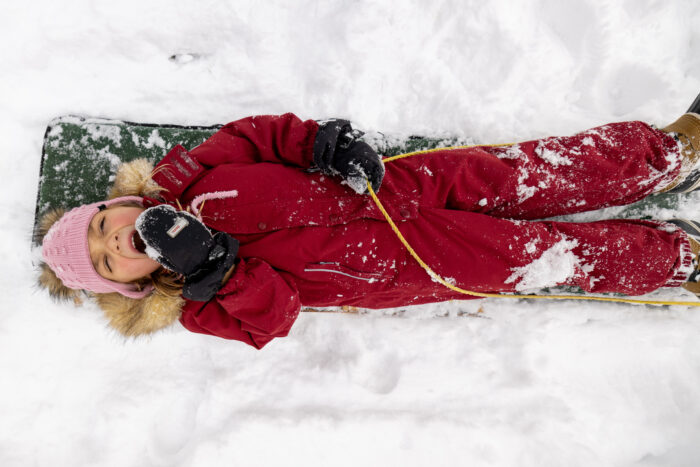
How We Tested Kids’ Snow Gear
Our Expert Testers
Our primary tester for the winter season is based in Carbondale, Colorado, Heather Balogh Rochfort is an avid outdoors person with decades of experience in mountain snowsports, like backcountry skiing, downhill skiing, uphilling, and cross-country skiing. She is also a mom to a vivacious kindergartener who logged more than 50 days at the local ski hill during the 2022-23 ski year.
She also tracked more than 50 days for the 2023-24 ski season: She boot packed Highlands Bowl for the first time. Not only did her daughter enjoy weekly full-day downhill ski lessons at Snowmass Ski Resort, but she also participated in weekly Nordic ski lessons, making her a prime tester for all kids’ gear and apparel. Her daughter also enjoys sledding after school.
Contributor Chelsey Magness was also a lead tester with her family in the Pacific Northwest.
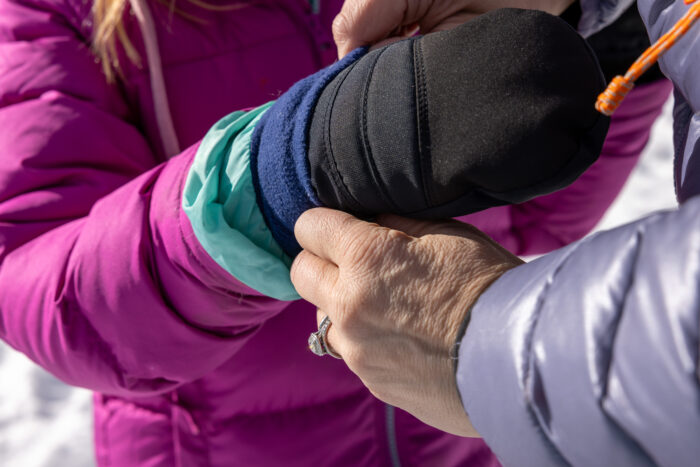
Our Testing Grounds
In addition to extensive research and knowledge of the category, we loaded our own children up with various apparel items last winter. They wore this gear downhill skiing, during family adventure trips, and every day to forest school, a type of outdoor preschool where the kiddos spend all day outside — no matter the weather. This meant the kids’ snow ski clothes were put through the wringer while walking through streams, hiking winter trails, cruising the local Nordic skiing loop, and riding bikes down snowy trails.
Our Testing Process
For this guide, we first looked at the essential items needed to safely get children outside in the snow: base layers, midlayers, jackets, snow pants, snowsuits, and gloves. From there, we looked at the overall quality of the item, durability, affordability, fit, and sustainability in regard to renewable fibers.
We also considered kid-specific factors like ease of use and functionality since kids prioritize different components than adults do. We tried to look at each item from an adult perspective to evaluate everyday features like washability or easy-to-use buttons.
Finally, we considered style. While toddlers don’t really care about what they’re wearing, older kids definitely have opinions. It’s important for children to like their snow gear, so we took style and trends into consideration.

Buyer’s Guide: How to Choose the Best Kids’ Snow Gear
Choosing kids’ ski clothing is daunting because you’re looking at a number of items and factors. However, here are the most important criteria to consider no matter what type of item you’re considering.
Waterproofness
Contrary to what you may think, not all kids’ gear and apparel is waterproof, nor does it need to be. Items like the L.L.Bean Kids’ Down Jacket or the Town Hall Down Town Puffy are only water-resistant, which means that a light rain for a short period of time won’t cause any problems.
However, a jacket like the Patagonia Everyday Ready Jacket or kits like the Oaki Rain/Trail Suit and the Hootie Hoo Pinnakle Insulated Jacket and Insulated Bibs are completely waterproof. This means that water resistance is enough to keep out driving rain or — in this case — total saturation when a child is sitting in a snowbank for 2 hours.
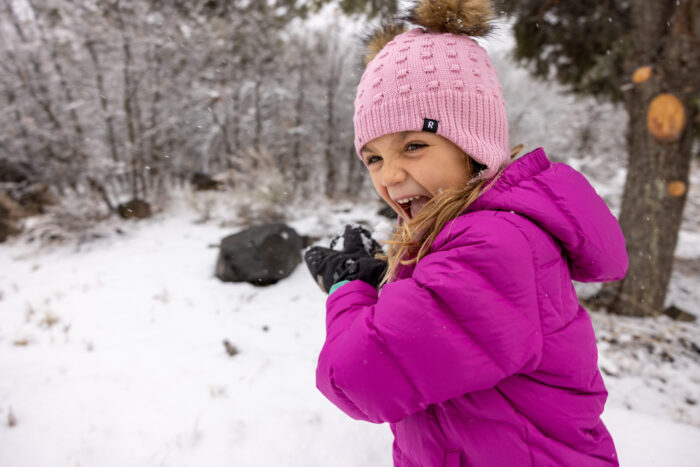
If you know you’re looking for waterproofing, it’s good to know that there are varying levels of water resistance. These are called waterproof ratings, and they are measured in millimeters. During this testing process, a one-inch by one-inch cylinder is placed over the tested fabric.
The cylinder is then filled with water. The height that water reaches before the fabric leaks — known as the water column — is where the waterproof rating comes from.
- 0-5,000mm: Minimal to no water resistance.
- 6,000-10,000mm: Rainproof and waterproof under light pressure.
- 11,000-15,000mm: Rainproof and waterproof unless under high pressure.
- 16,000-20,000mm: Rainproof and waterproof under high pressure.
- 20,0000mm+: Rainproof and waterproof under very high pressure.
For most external kids’ snow gear, you’ll want waterproof ratings that minimally fall between 6,000-10,000 mm.

It’s also a good idea to understand where waterproofing comes from, as most fabrics aren’t naturally waterproof. To get this waterproofing, most apparel uses either a laminate or a coating. A laminate is similar to wallpaper in that it provides full coverage with the best level of waterproofing.
It costs more and is frequently made from polyurethane (PU). Unlike wallpaper, a coating is painted on in a similar fashion to how we paint a wall. While this is more affordable, it doesn’t offer as effective waterproofing.
Most outerwear uses Durable Water Repellent or DWR. This is an added chemical finish that allows the moisture to bead up on the surface of the garment. Historically, DWR was a toxic concoction packed with “forever chemicals” called polyfluoroalkyl substances, or PFAs. These days, many brands like REI and Patagonia are taking a stand against these toxic chemicals and using PFA-free DWR that is better for the environment.
Final note: while most outdoor brands would disagree, there really isn’t such a thing as “waterproof-breathable” fabric. The more waterproof a fabric, the less breathable it will be; that’s the inherent tradeoff. Materials like rubber are 100% waterproof, but we don’t often wear them skiing because we would overheat immediately. That’s why most kids’ snow gear uses “waterproof-breathable” materials like GORE-TEX. They breathe better than impermeable materials like rubber, but still offer decent waterproofing.
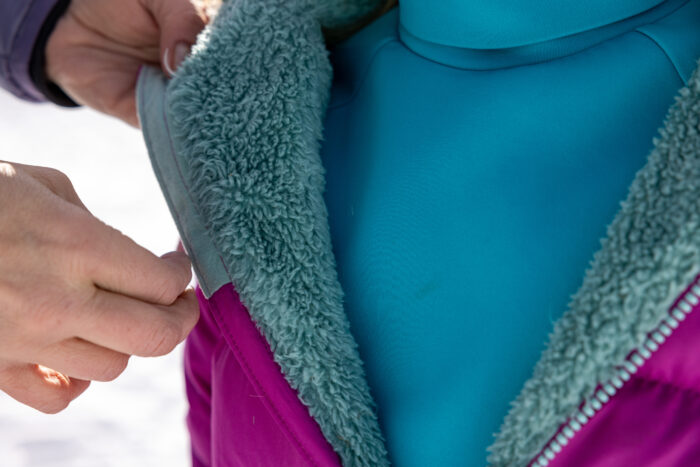
Insulation
Insulation is the ingredient that keeps you warm, but it comes in a variety of forms and fibers.
Down
Down insulation comes from ducks or geese, but it’s not the feathers. Instead, it comes from the plumage, that soft and fuzzy layer that sits beneath. This plumage lofts up inside the garment and traps heat in the air space between all of the fuzzy stuff.
Found in items like the Patagonia Baby Down Sweater Vest or the Patagonia High-Loft Down Sweater Bunting, down is often considered the gold standard since it provides the highest amount of warmth with the lowest amount of weight. But it’s not without its drawbacks. Down doesn’t dry quickly, so when it gets wet, it loses its loft and, thus, its warmth. It also costs more than synthetic insulation.
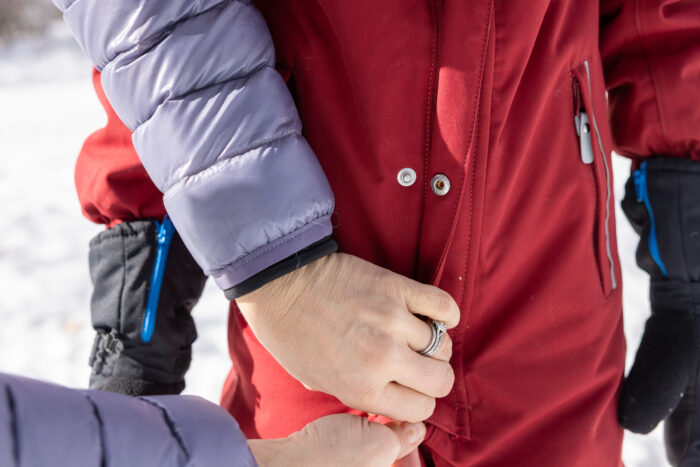
Synthetic Insulation
Synthetic insulation goes by a number of names since many brands make their own proprietary version. In general, synthetic insulation uses some type of human-made, compressible fibers to warm us up. Unlike down, these are water resistant, which makes synthetic insulation a better choice in wet environments.
Synthetic insulation is often heavier and less packable than down, but it often costs less money. It can be found in a ton of kids’ ski and snowboard clothing like the Patagonia Everyday Ready Jacket, the Patagonia Baby Reversible Tribbles Hoody, or the Reima Stavanger Snowsuit. It’s also the common choice for mittens and gloves like the Reima Ote Waterproof Mittens.
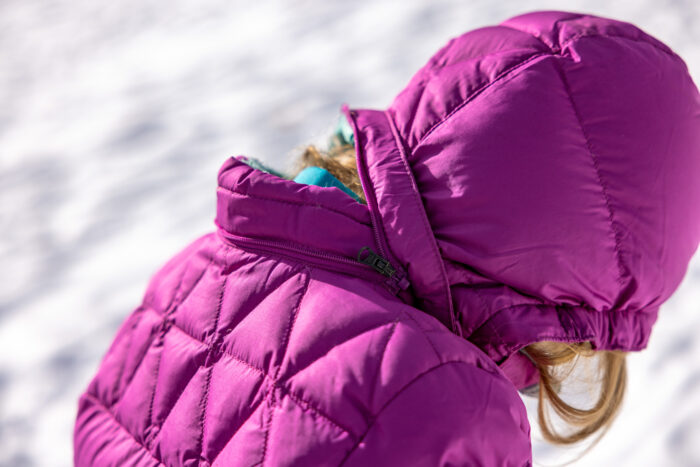
Alternative Insulation
While down and synthetic insulation are the most popular forms of insulation, there are many other alternate options for fibers that keep us warm. For example, the Columbia Sportswear Omni-Heat Midweight Baselayer Crew and Tights use the brand’s proprietary thermal reflectivity, a series of silver dots inside the clothing that reflect your body heat back at you to maintain warmth.
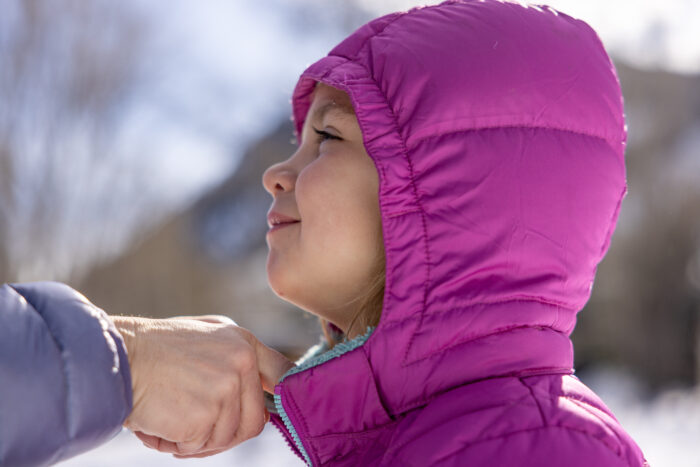
Windproofness
Windproofing may not immediately be something you consider when buying kids’ snow gear, but it’s an important factor. If an item has low windproofing, wind can rip through the warmth.
In general, kids’ ski and snowboard clothing will fall into one of two categories: windproof or wind-resistant. Any item that is waterproof will also be fully windproof since the barrier blocking the rain and snow is also blocking the wind. Simultaneously, a water-resistant item will also be wind-resistant.
The tradeoff with wind-resistant items is that they are more breathable than windproof gear, making them great choices for high-output activities like cross-country skiing. That’s why the Hestra Junior Tracker Gloves are only wind-resistant; they are very breathable for Nordic skiing.
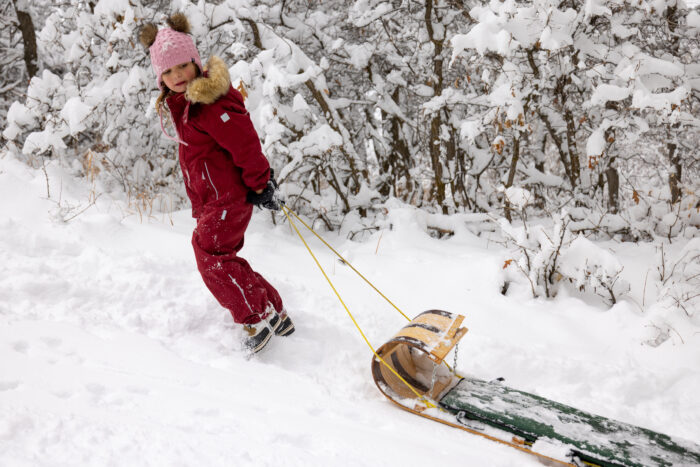
Breathability
As we mentioned before, breathability is the game changer when it comes to water or windproofing. While it’s great to be dry and safe from the snow and rain, no one wants to go skiing inside a portable sauna. That’s where breathability comes in.
In science terms, breathability is the transfer of water vapor from the inside of the fabric to the outside. This happens because opposites attract: Your warm, sweaty body heat is drawn to the cold and fresh outside air. The more efficient this process is, the better you feel without getting cold or clammy. However, breathability is much easier when there isn’t a waterproof or windproof barrier blocking the path of the vapor transfer.
That’s why non-waterproof items like the Airblaster Youth Ninja Suit and the Chasing Windmills Merino Sweatshirt and Sweatpants are so breathable: They don’t have any type of waterproofing. Snow gear like the Obermeyer Snoverall Bibs will have less breathability but perform far better against wet and snowy weather.
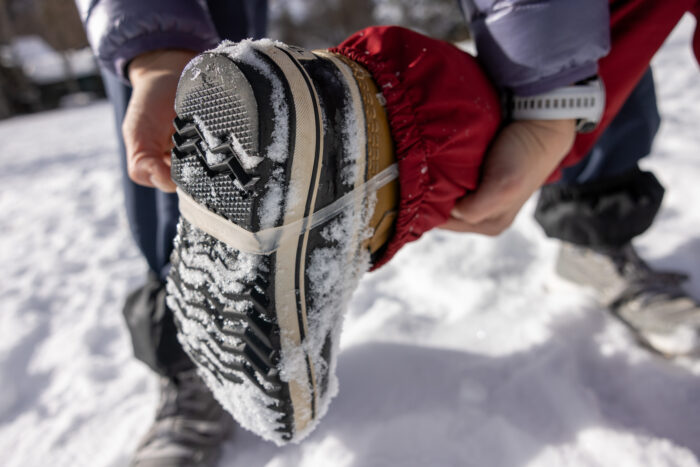
Reinforcements
It’s no secret that children are tough on gear. That’s why kids’ snow gear often has reinforced sections to add durability in high-wear areas. For kiddos, these areas are often the knees, elbows, butt, and hem of snowpants or snowsuits. The fabric of the reinforcement varies but is often a high-denier polyester, Cordura, or ballistic nylon.
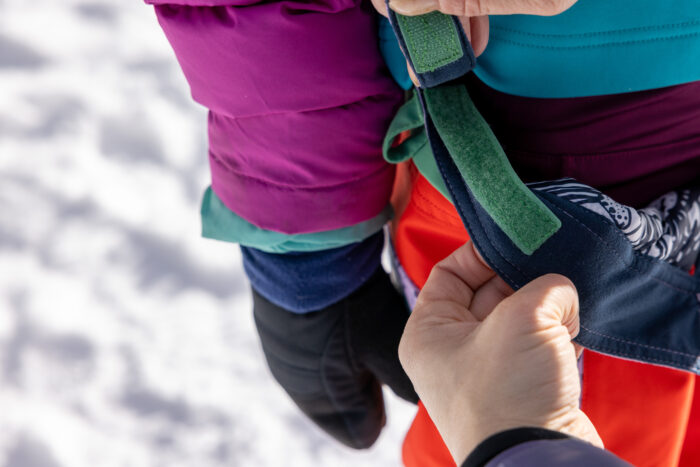
Adjustability & Growth System
Kids grow like weeds, and it’s the parents who have to shell out cash every year to buy the next size. That’s why adjustability and growth systems are a key element to most kids’ snow gear. Brands like Columbia Sportswear, Obermeyer, and WeeDo all have similar systems that allow parents to remove some stitching or undo a snap to release 1-2 inches of added length in the arms or legs. This allows kids to wear items longer and get more use out of them.
Other brands like Reima intentionally make a roomy product so that it lasts longer. If your child wears a size 4T in the Reima Stavanger, he will likely find it big at first. This is intentional because Reima wants the snowsuit to last for more than one season.
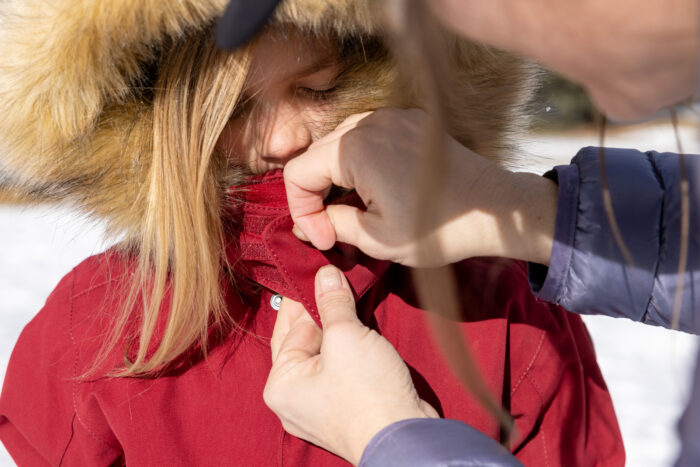
Hood & Collar
The vast majority of kids’ snow jackets have some type of hood. That’s because we lose the majority of our heat through our heads, and a hood is a great way to keep your kiddo warm.
However, there are various types of hoods depending on how you plan to use the jacket. A fixed hood is one that is permanently attached while a removable hood (like the L.L.Bean Kids’ Down Jacket) is one that is attached via a zipper or snaps. This means your child can take it off during a warm day or if they are wearing a beanie and don’t need it. Hoods can also be lined, unlined, or insulated.
Insulated hoods are warmer and are best for sedentary activities in cold weather. A lined hood has a second layer of fabric sewn into the interior, which adds a little more warmth but is mainly a nicer aesthetic.
Kids’ snow gear doesn’t have as many collar options as adults, but you’ll still see options varying from unlined to fleece-lined. When possible, opt for a fleece-lined collar since that warm coziness goes a long way toward keeping your child comfortable.
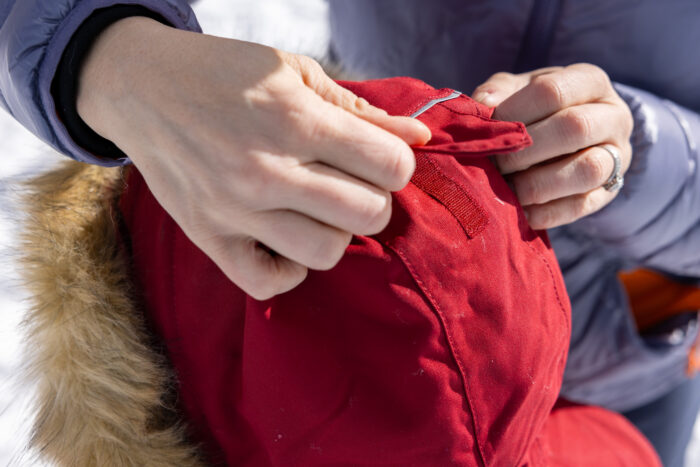
Pockets
Pockets are equally important for adult ski jackets and kids’ winter jackets, but zippered pockets are especially crucial for our littlest rippers. At a minimum, look for kids’ gear and apparel that has at least two zippered hand pockets for children to use for warmth or to stash away secret treasures.
Snow pants like the Namuk Crusade Snow Pants Upcycled go above and beyond by adding Velcro cargo pockets on the side of the leg. Butt pockets are less essential for kids — especially toddlers — since they spend so much time sitting on their rears.
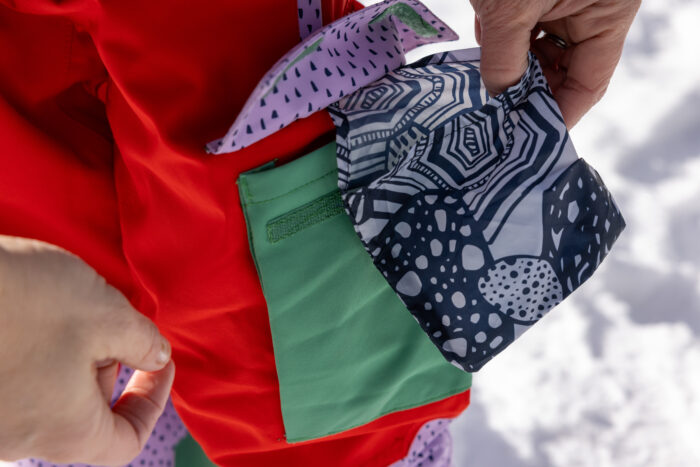
Sustainability
Gone are the days when we don’t pay attention to the fibers our children are wearing. When possible, opt for natural fibers like the Merino wool found in the Iksplor Kid Iksplorer Set. While they are more expensive than synthetic options, natural fibers are not derived from the fossil fuel industry and degrade at the end of their life cycle.
If you can’t swing the cost of natural fibers or it doesn’t make sense (like with waterproof outer layers), try to choose kids’ ski clothes made from recycled materials like those found in the Patagonia Kids Capilene Midweight Crew and Bottoms. While these still struggle with degradation at the end of their life cycle, they are less reliant on fossil fuels since we are only dealing with a single extraction.
For insulation, it’s also a good idea to make sure your down is Responsible Down Standard (RDS) or Global Traceable Down Standard (GTDS) certified. This means that the plumage is coming from a reputable source with high standards for animal welfare and a transparent production process.

Price & Value
Kids’ snow gear runs the spectrum when it comes to pricing; some items simply cost a lot more than others. An expensive item doesn’t necessarily mean it is better than an affordable alternative. However, sustainable fibers and eco-friendly manufacturing do come at a cost; you’ll pay more so the planet pays less.
Budget
Mittens for kids will be one of the more affordable items you buy and will typically range from $20 to $60.
The Reima Ote Waterproof Mittens ($40) are in the middle of the price range but offer higher warmth and all-around weatherproofing. The Hestra Junior Tracker Gloves ($50) are the priciest in this buyer’s guide. While they aren’t waterproof (by design), they do have high-quality craftsmanship and premium materials that add to the cost.
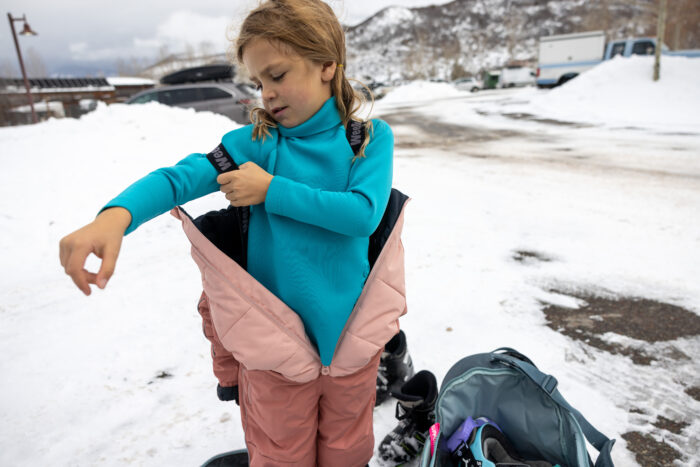
Base layers are a necessity for your children and you can expect to pay anywhere from $30 to $60 per item. The Columbia Omni-Heat Midweight Baselayer Crew ($25) is the most affordable in our grouping because it’s made of synthetic materials with less of an emphasis on sustainability.
The Patagonia Kids Capilene Midweight Crew ($39) is priced in the middle of the spectrum. While it still uses synthetic materials, they are all recycled and that adds to the cost. At $109 per set ($55 per item), the Iksplor Kid Iksplorer Set is the priciest of the base layers, but you’re getting 100% merino wool that is certified by the Responsible Wool Standard. The Airblaster Youth Ninja Suit is slightly lower ($100) but it does come with top and bottom coverage, along with high-quality materials.
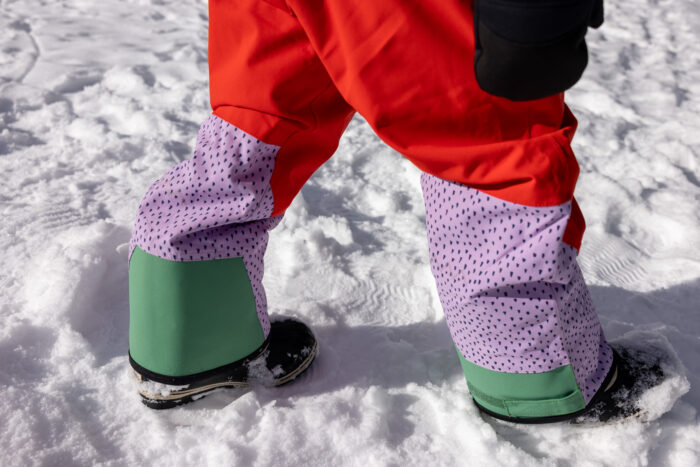
Mid-Tier
Midlayers look very different from kid to kid and brand to brand, and the cost is commensurate, ranging from $50 to $120. On the more affordable end is the Chasing Windmills Merino Fleece Sweatshirt, at $60 for Merino materials.
The Patagonia Baby Down Sweater Vest falls somewhere in the middle ($99) thanks to a host of sustainable materials like recycled polyester and recycled down. The L.L.Bean Kids’ Down Jacket ($109) sits at the top of the spectrum because it offers more warmth and weather resistance than any of the other midlayers.
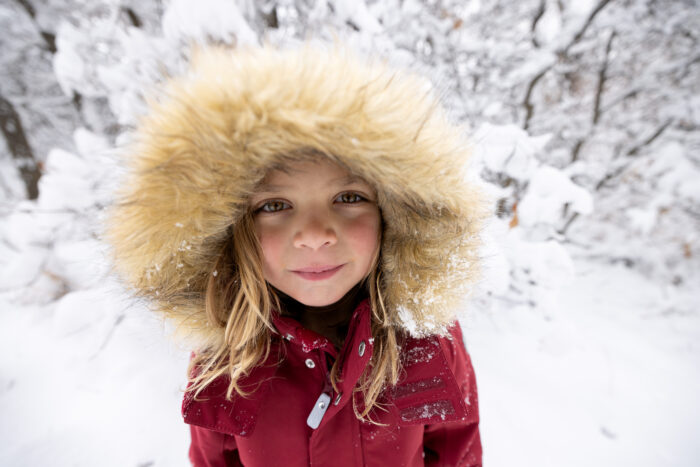
Premium
Outer layers like snow pants, ski jackets, and snowsuits will be the most expensive item you buy since they offer warmth and all-around weather protection. For ski jackets and snow pants, the price range is vast: $80-250. The Oaki Rain/Trail Suit ($69) is the most affordable outer layer in our guide. While it offers complete waterproofing, it does not have any insulation.
The Obermeyer Snoverall Bibs ($100) are next on the list. Like the Oaki, they offer solid waterproofing but also have a decent amount of insulation to keep kids warm, too. The Patagonia Baby Reversible Tribbles Hoody is at a similar price point ($109). While it also has waterproofing and insulation, you’ll also get a host of recycled materials.
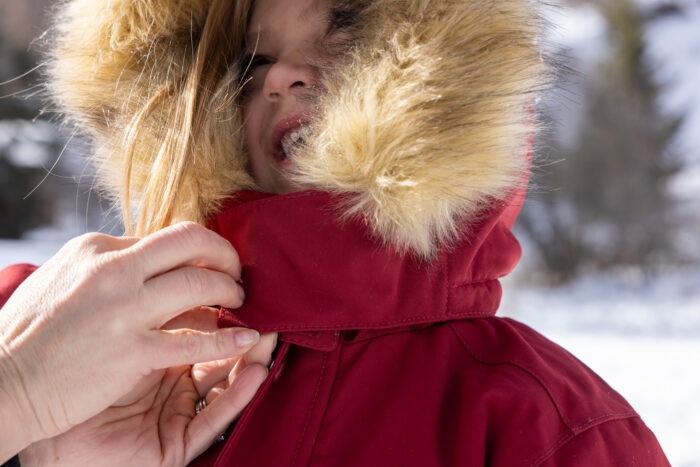
The Patagonia Infant High-Loft Down Sweater Bunting ($169), Namuk Crusade Snow Pants Upcycled ($149), Hootie Hoo Pinnakle Insulated Jacket ($180), and Insulated Bibs ($165) are all near the premium end of the pack in regard to price.
While it can be used as a midlayer or exterior layer, the Town Hall Down Town Puffy ($160) is also near the top of the spectrum. While each of these products is completely waterproof and fully insulated, they’re also constructed by brands with an ethos rooted in sustainability — and the materials show that.
Finally, the Reima Stavanger Snowsuit ($195) sits on the highest end of the spectrum. This is a full snowsuit, so you’re getting both a jacket and snow pants with waterproofing and tons of insulation. Beyond that, you’re also getting a lot of attention to detail with kid-specific features that no other brand has. If you and your child spend a lot of time outside, the added cost may be worth it.

Frequently Asked Questions
There isn’t a single brand that is categorized as the “best” brands for kids’ ski clothing.
However, there are certainly brands that make high-quality products for kids. In the United States, Patagonia has long been known for exceptional kids’ apparel, with a special nod to their Infant High-Loft Down Sweater Bunting.
Columbia Sportswear is also known for decent and affordable kids’ snow gear. But in the past 5-7 years, more new or European brands have come to the American market with kids-only apparel, adding more competition and quality into the category. These brands include Iksplor, Reima, WeeDo, and Namuk, to name a few.
Additionally, the last few years have brought innovation to this category from American brands like Town Hall (started in Steamboat Springs, Colo.) and Hootie Hoo (founded in Vermont).
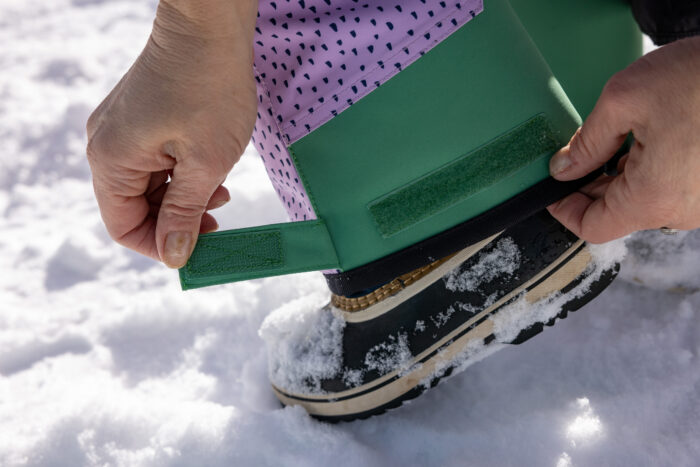
Winter clothing is especially pricey, so it’s tempting for parents to size everything up to get the most use out of it. While that can be a temporary solution, it may not be your best bet. Remember: large outdoor layers will fit sloppy and can cause tripping hazards for your kiddo (or even ripped layers if they step on pant legs).
Additionally, winter layers perform best if they fit properly. An oversized baselayer is going to hang on your child, which means the fabric won’t be able to properly wick sweat away from their skin. For an insulating puffy or exterior ski kit, a larger size means lots of extra space on the inside. Since both down and synthetic insulation keep us warm by warming the air around us, extra space will take much longer to warm up for your child.
On the flip side, you don’t want your child’s gear to fit too snugly. This will make it tougher for them to move around and stay warm, which could be problematic.
Ultimately, use the accompanying sizing guides for each brand and choose the size that works best for your kiddo when you need it — and then double down on those growing systems that are included in most exterior layers these days!
Neither is better and there is no overall rule on snow pants versus snowsuits. However, a general rule of thumb is that snowsuits are better for smaller kiddos (younger than kindergarten) whereas snow pants are more popular with the older crowd. Snowsuits work best for babies, toddlers, and preschoolers because there are no cracks to let cold air or snow inside.
As a result, they tend to be warmer which is especially helpful for babies who cannot communicate their needs. However, they are more cumbersome, particularly for kids who are not wearing diapers. That’s why most older children start to rebel against them and ask for snow pants.
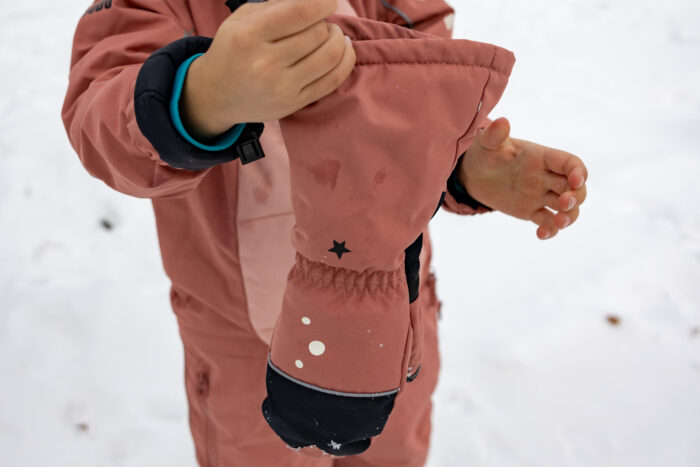
Gauging your baby’s warmth during outdoor adventures is one of the most stressful parenting tasks. It’s so relative: Some babes run warm and others are little ice cubes.
If you’re worried about them while playing in the snow, check on their temperature by feeling their core every once in awhile. If it feels cold to the touch, put another layer on them. If it’s too hot, remove a layer.
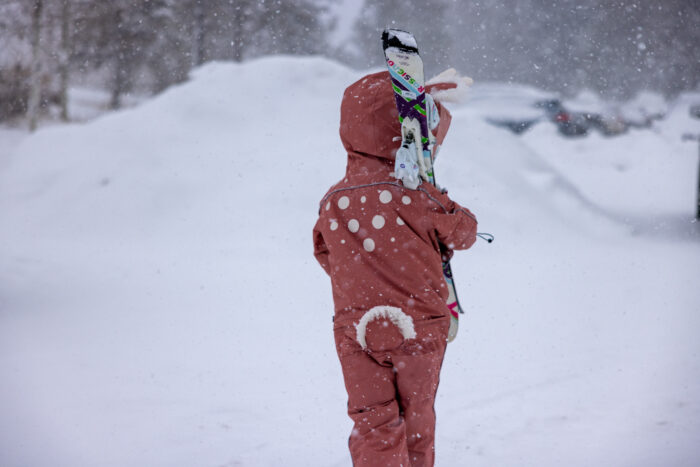
It is often overwhelming to build out your child’s first winter kit, so start with the basics. First, prioritize high-quality baselayers. These are the items that will sit next to your child’s skin and can make or break their comfort. Second, emphasize the outer layers (which may or may not include insulation).
Children have a tendency to wallow in the snow far more than adults do, so it’s more important to guarantee waterproofness and a reliable layer against Mother Nature. Lastly, consider their appendages. Hands and toes are typically the first things to get cold, so pay extra attention to their hand coverings. For the most part, ditch the gloves; mittens are much warmer for little fingers.
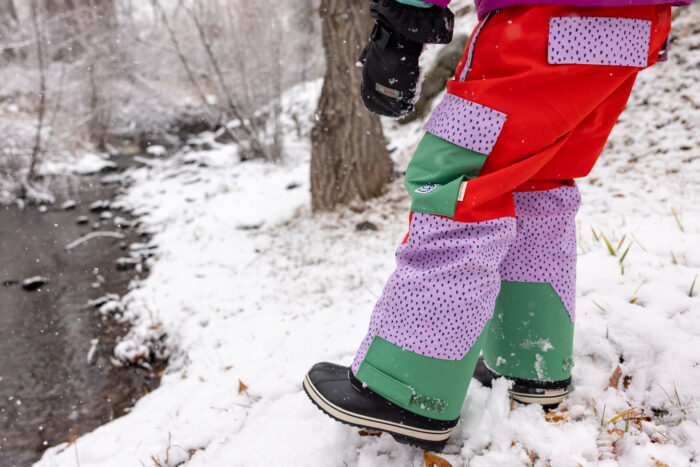
If parents made all of the kids’ outdoor clothing, it would probably be more affordable. But as it is, kids’ clothes can be outrageously expensive. On the one hand, we want our babies to be comfortable on outside adventures. On the other hand, we still need a few bucks left in the bank for said winter adventure.
We’ve found a few strategies for gearing up for winter without breaking the bank. First, before you drop a ton of money on winter gear for your child, check out local thrift or used gear stores.
Ask your fellow parent friends if they have anything they don’t need anymore. Having a go-to source for secondhand gear can be a real treasure.
Next, prioritize and think about how often you’ll really use something. If it’s something you know you’ll use quite often, it’s worth the splurge. But if it’s a once-per-year kind of item, consider finding an affordable alternative.
Most of all, just get out there. Whatever gear you end up choosing, your kid, your sanity, and your family memories will thank you for making the effort to get outside — even when the temperature drops and the snow flies.
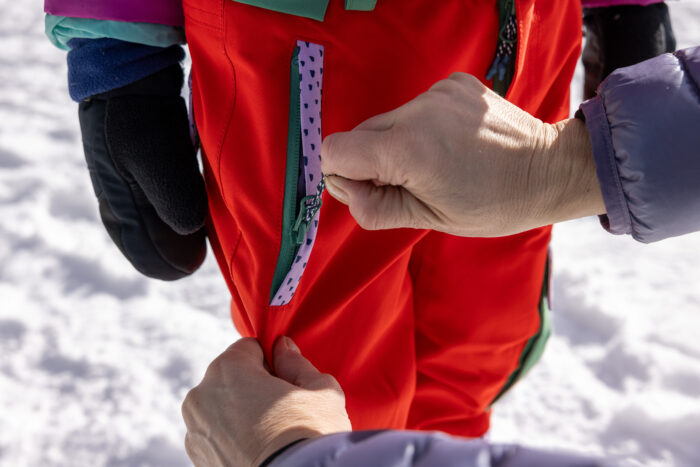
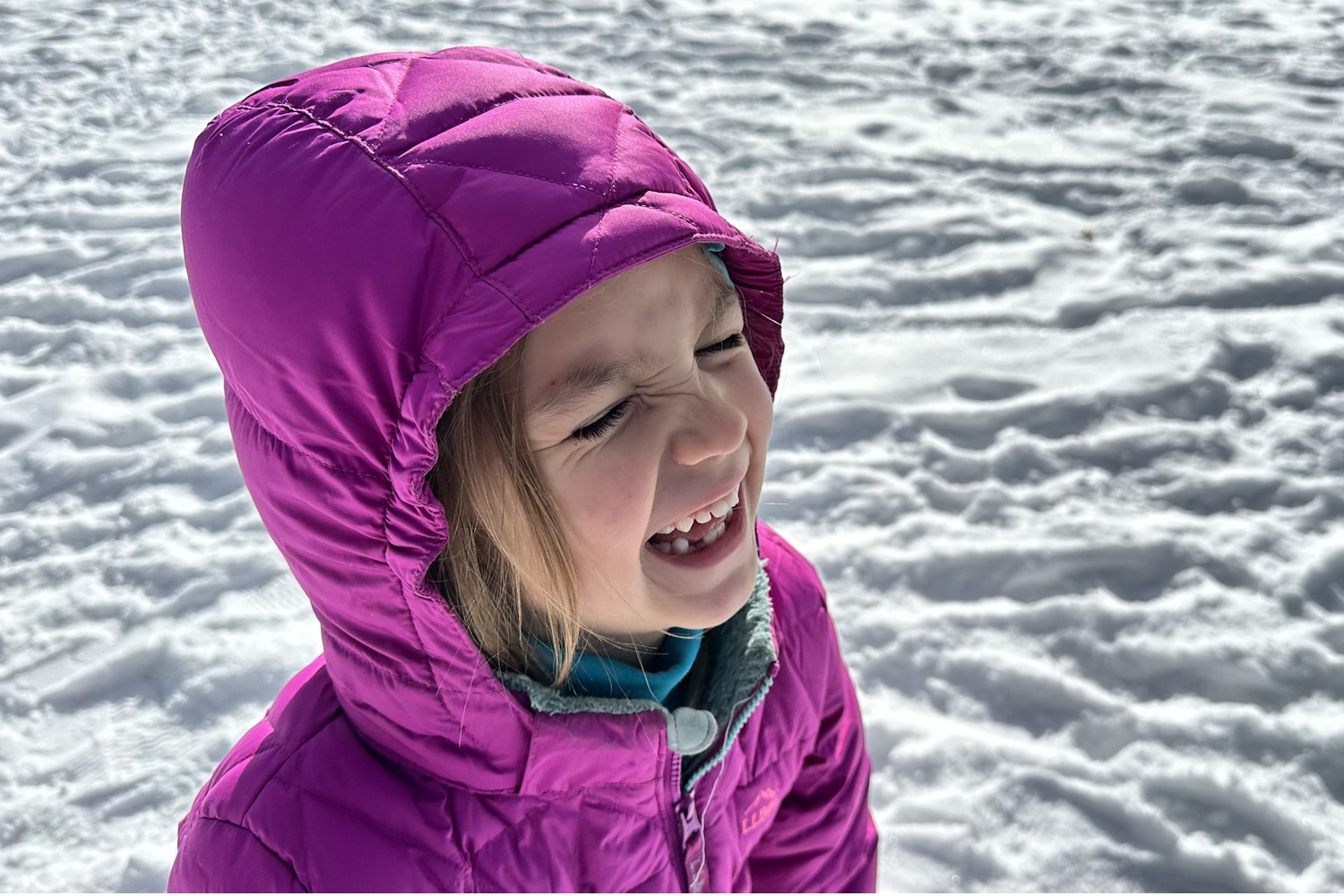
Waterproof Down Warmth, Fleece-Lined Comfort: Kids’ L.L.Bean Down Jacket Review
L.L.Bean’s Down Jacket is our daughter’s daily driver for its cozy warmth and lightweight design that doesn’t weigh her down.
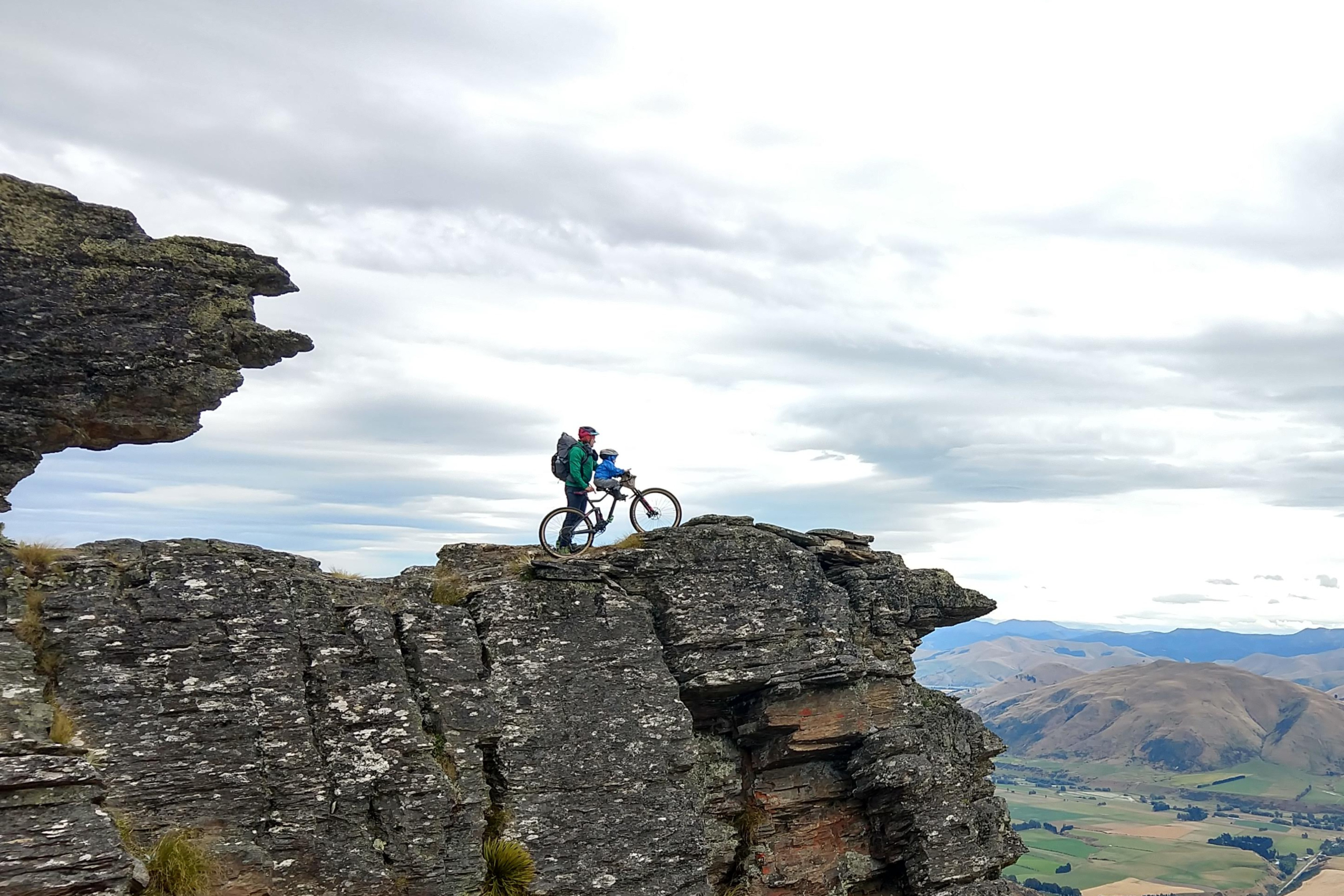
I’ve Camped 1,000 Nights With My Kids: Here’s What I Learned
Taking the family on camping trips doesn’t have to be complicated or stressful. Here are a few tips from a professional athlete on how to make it easy.
